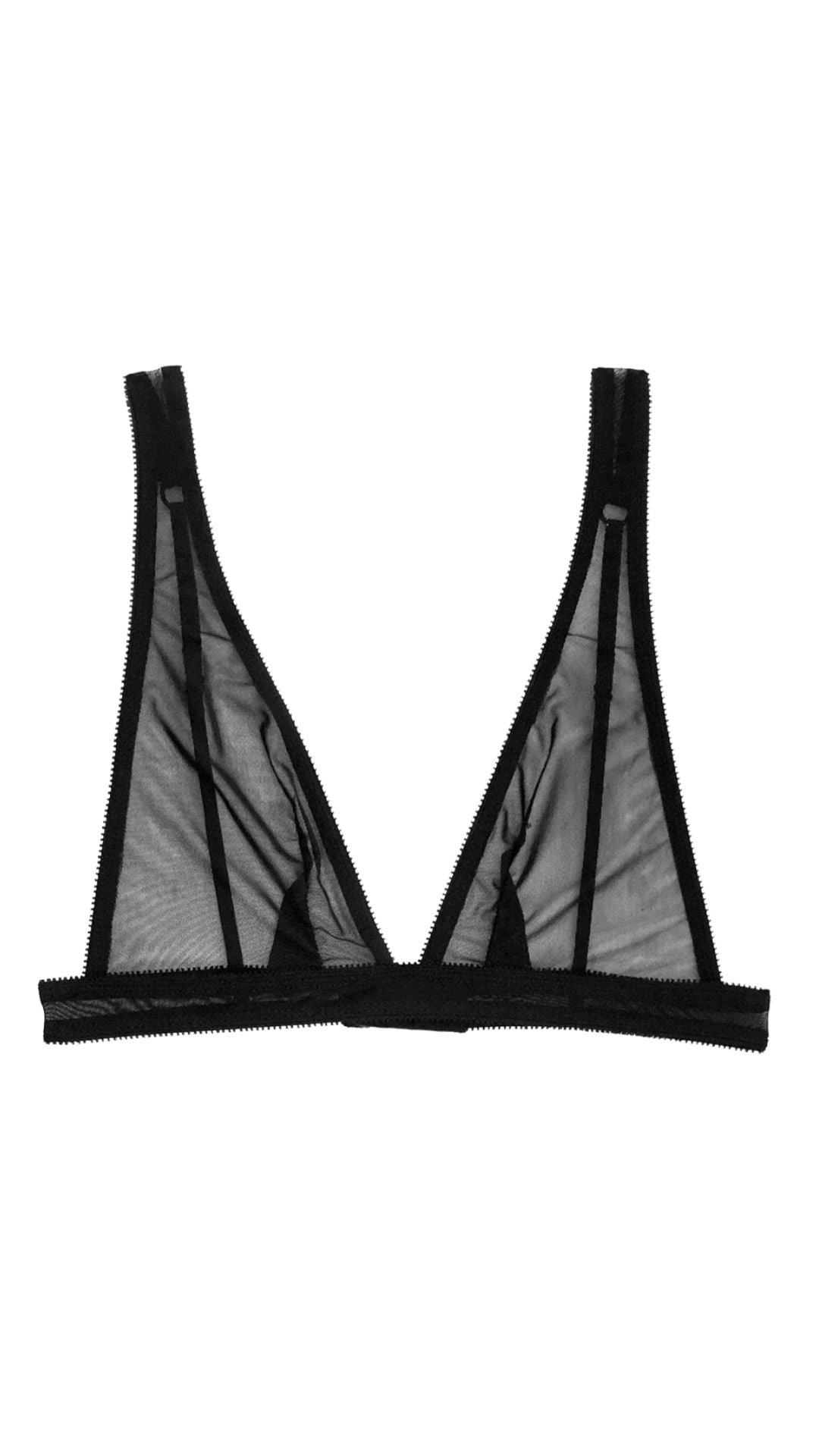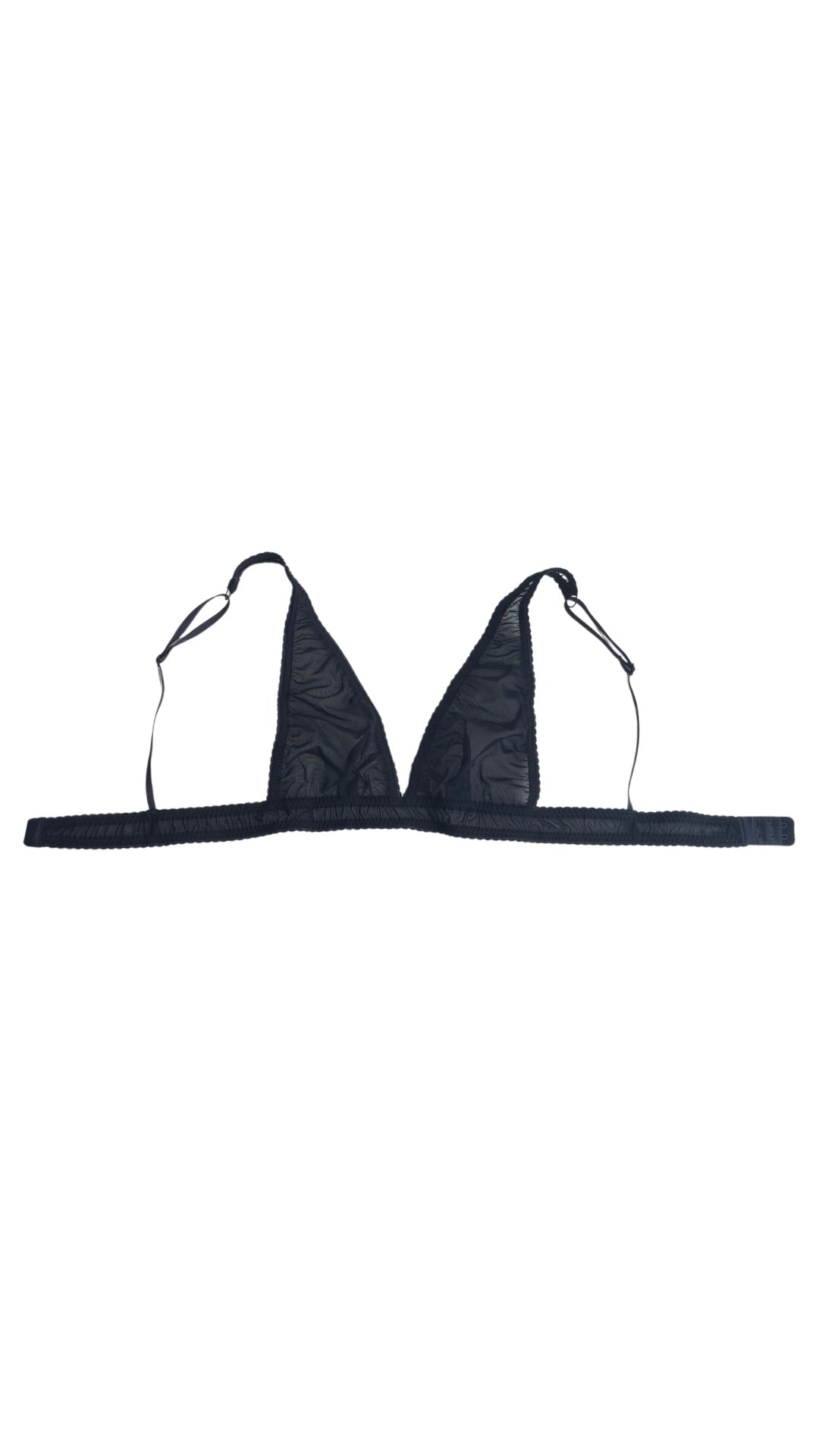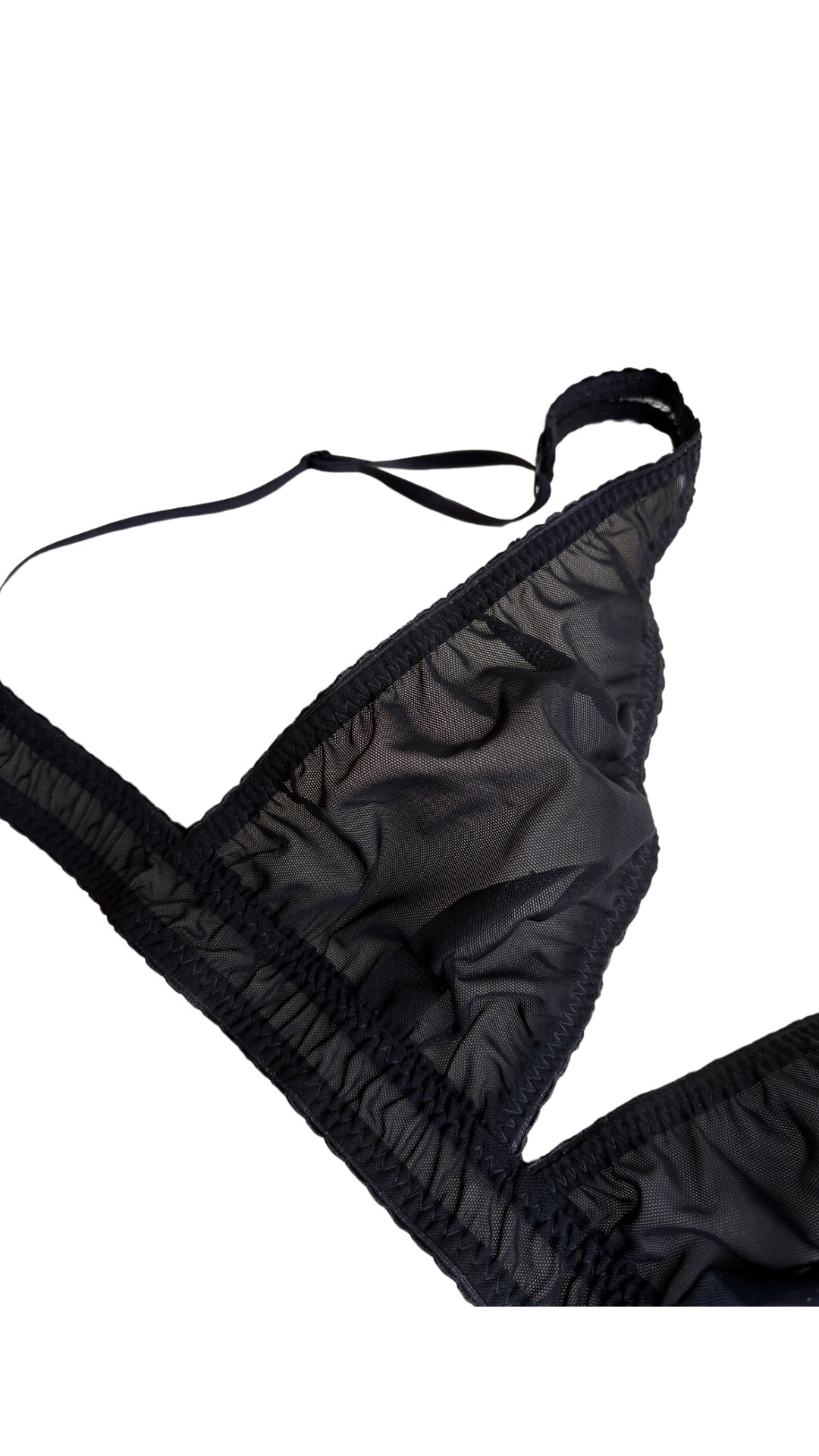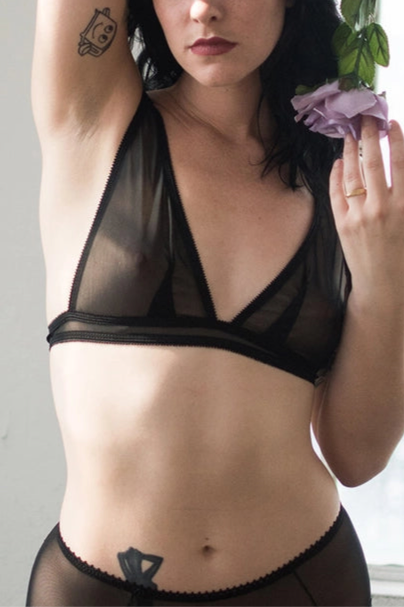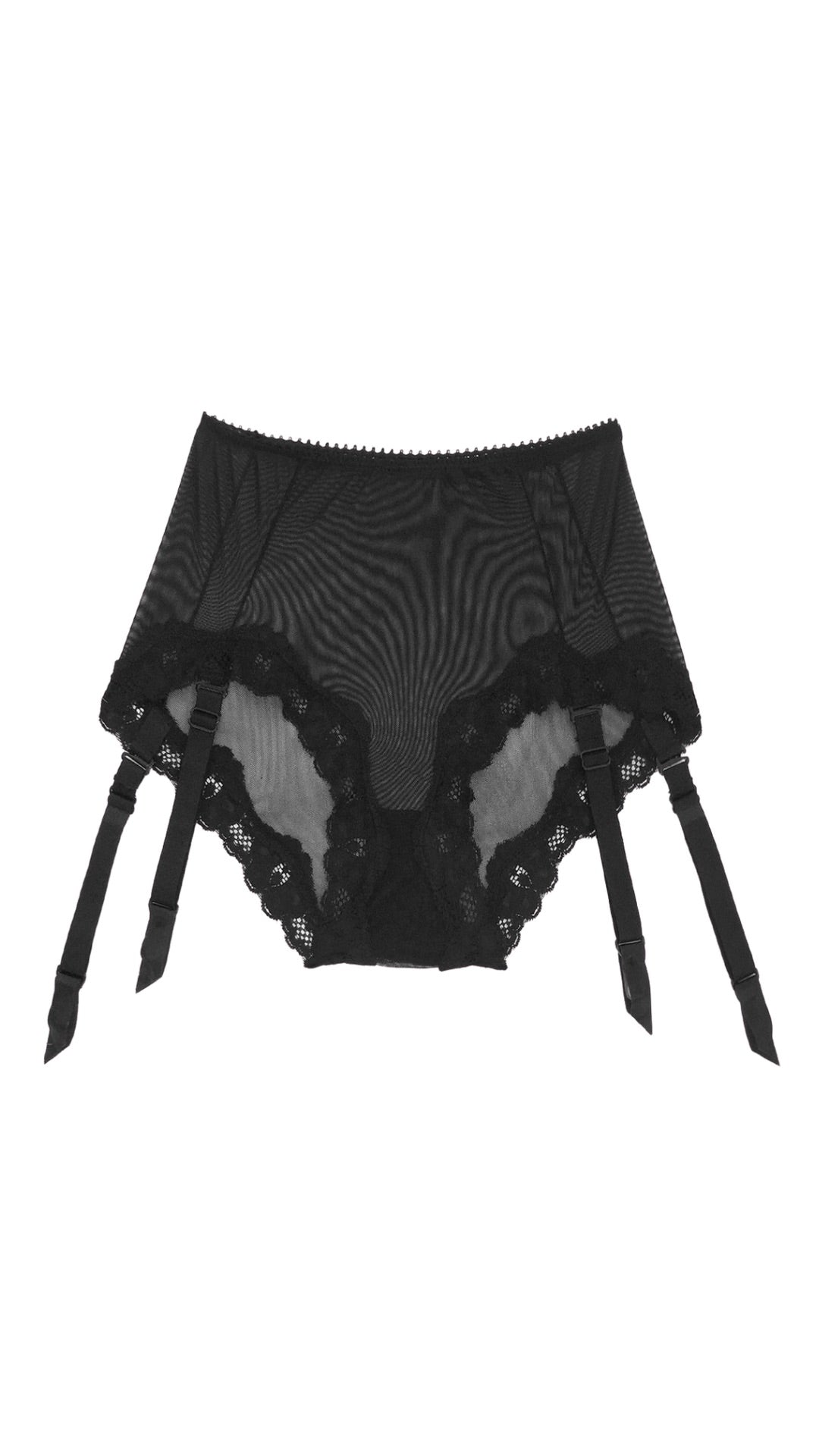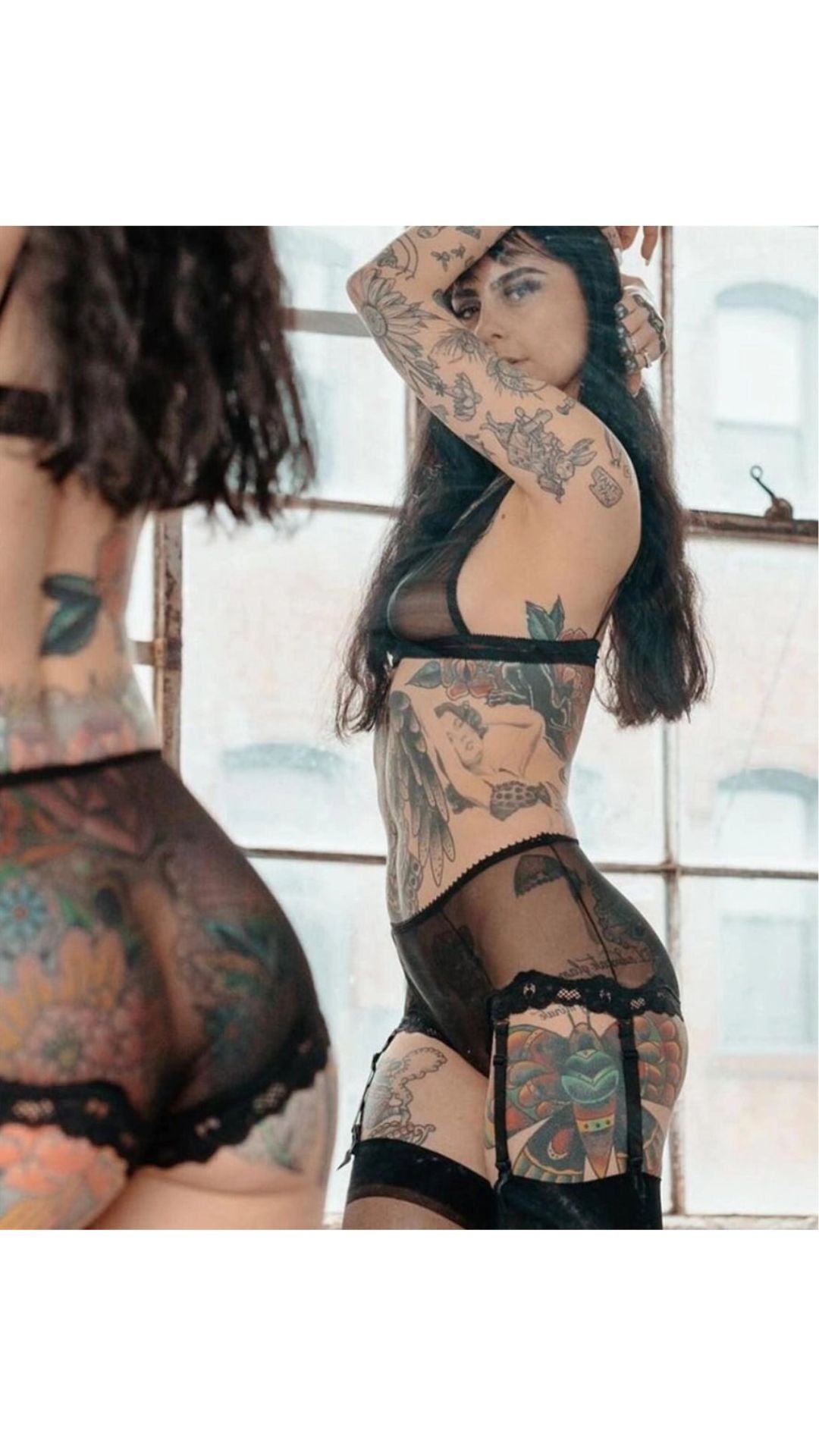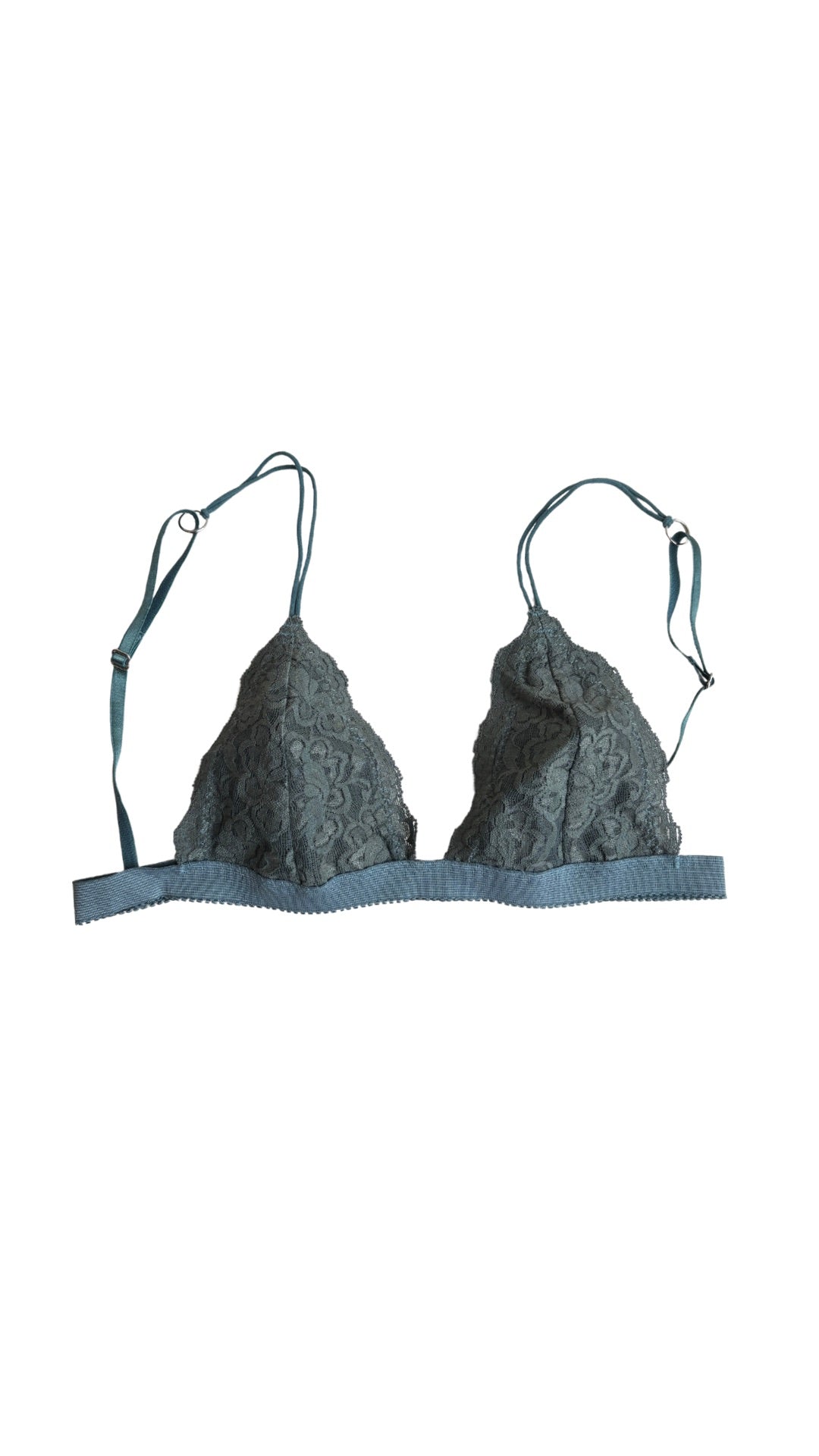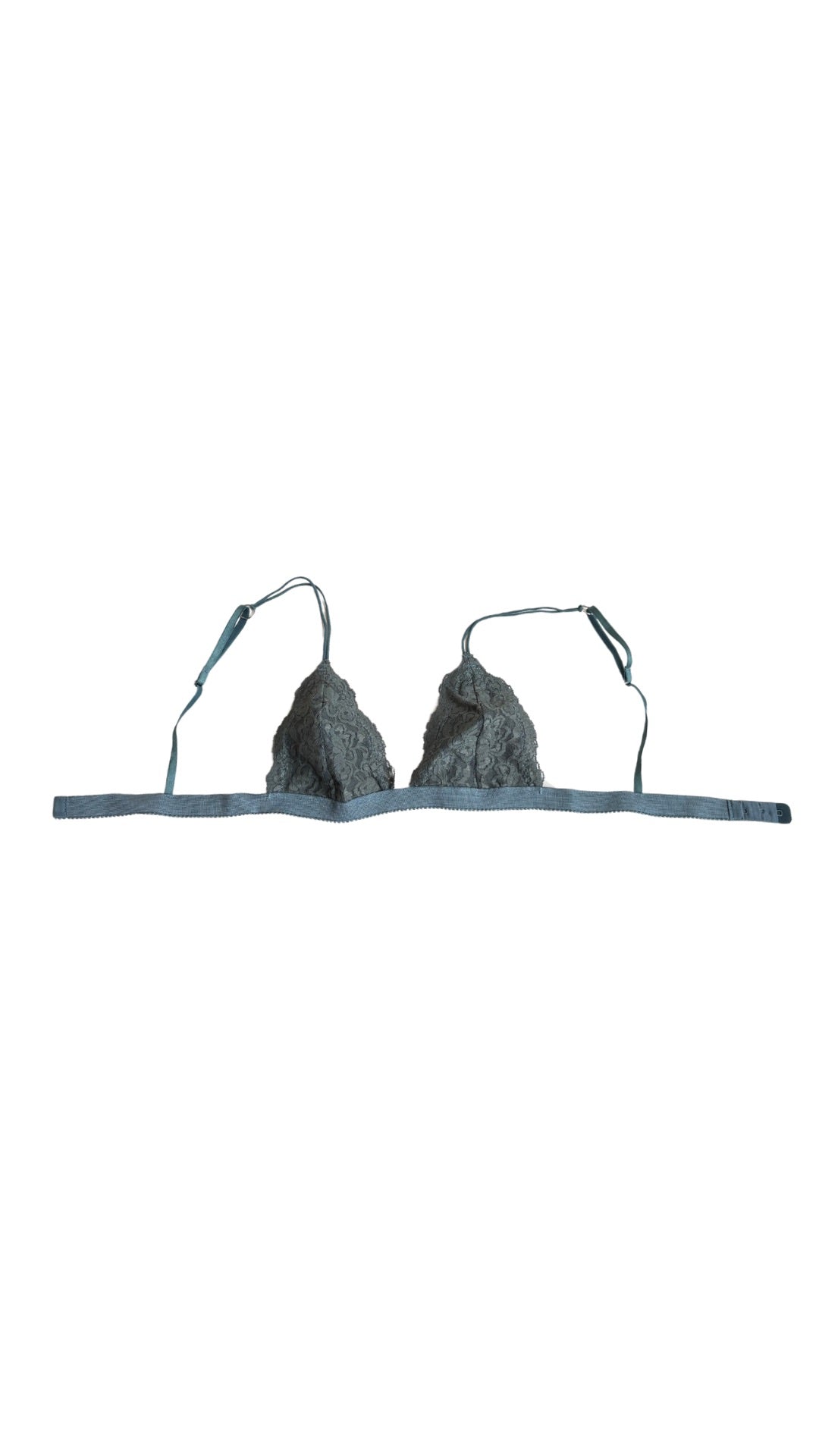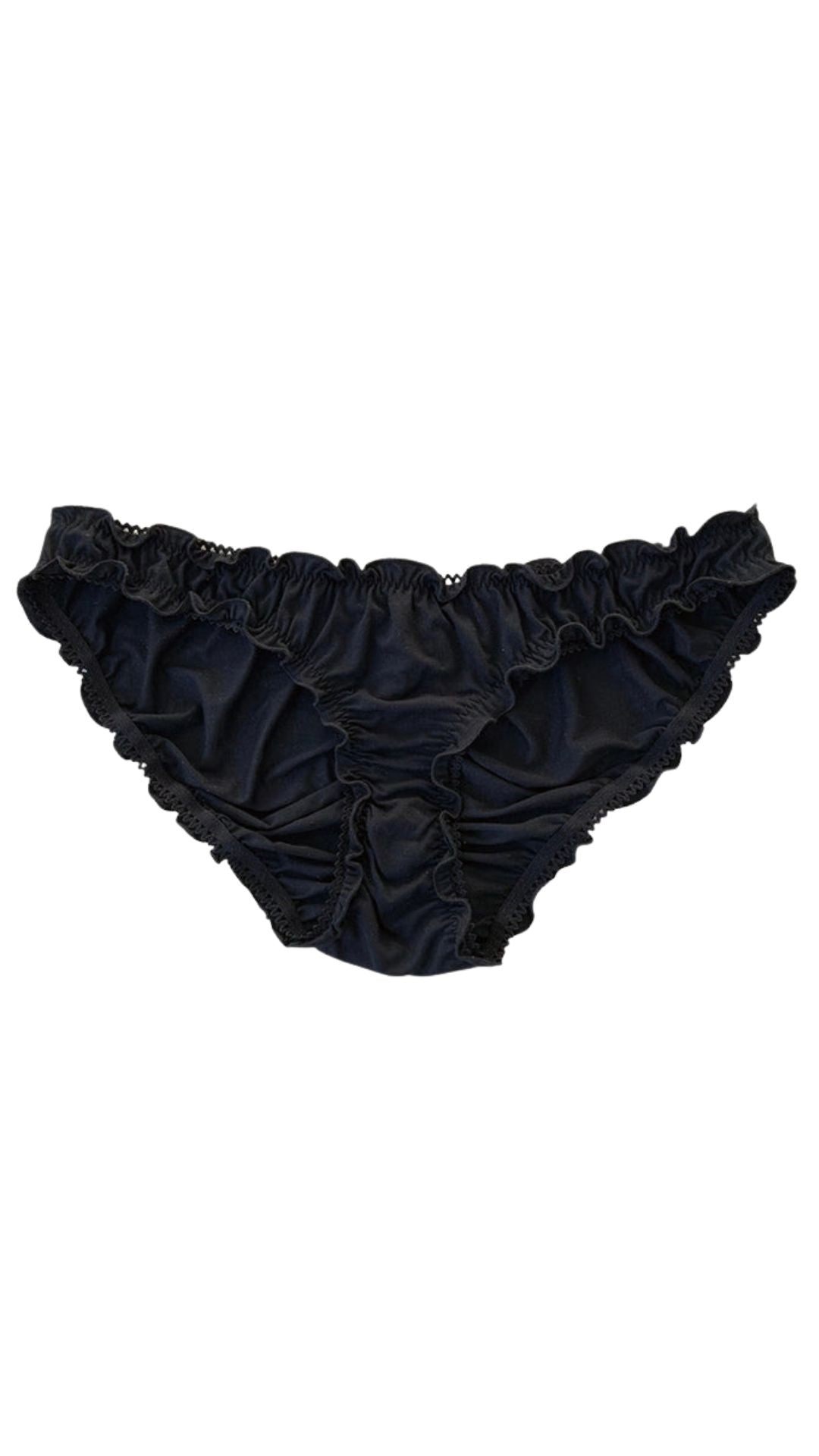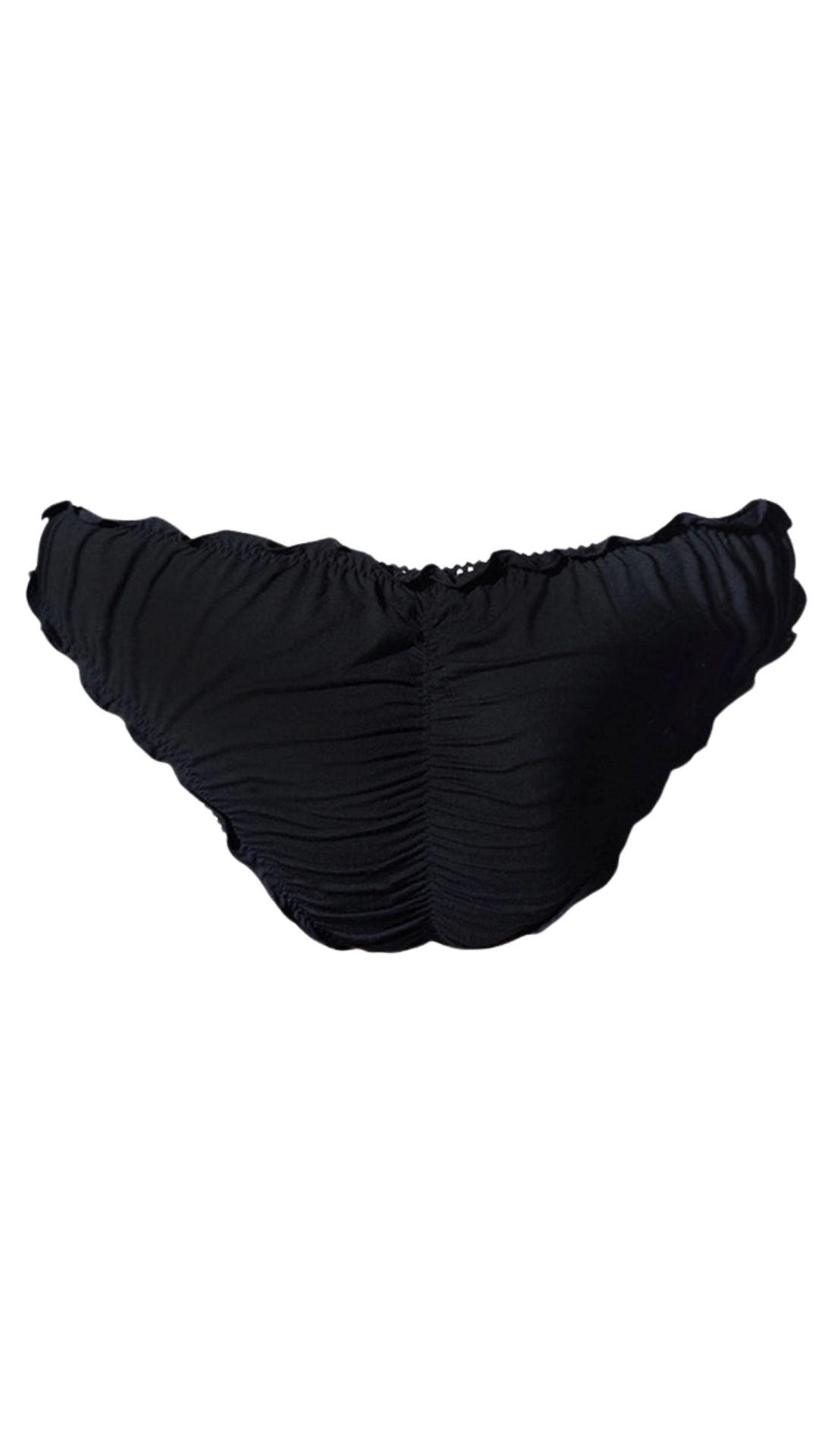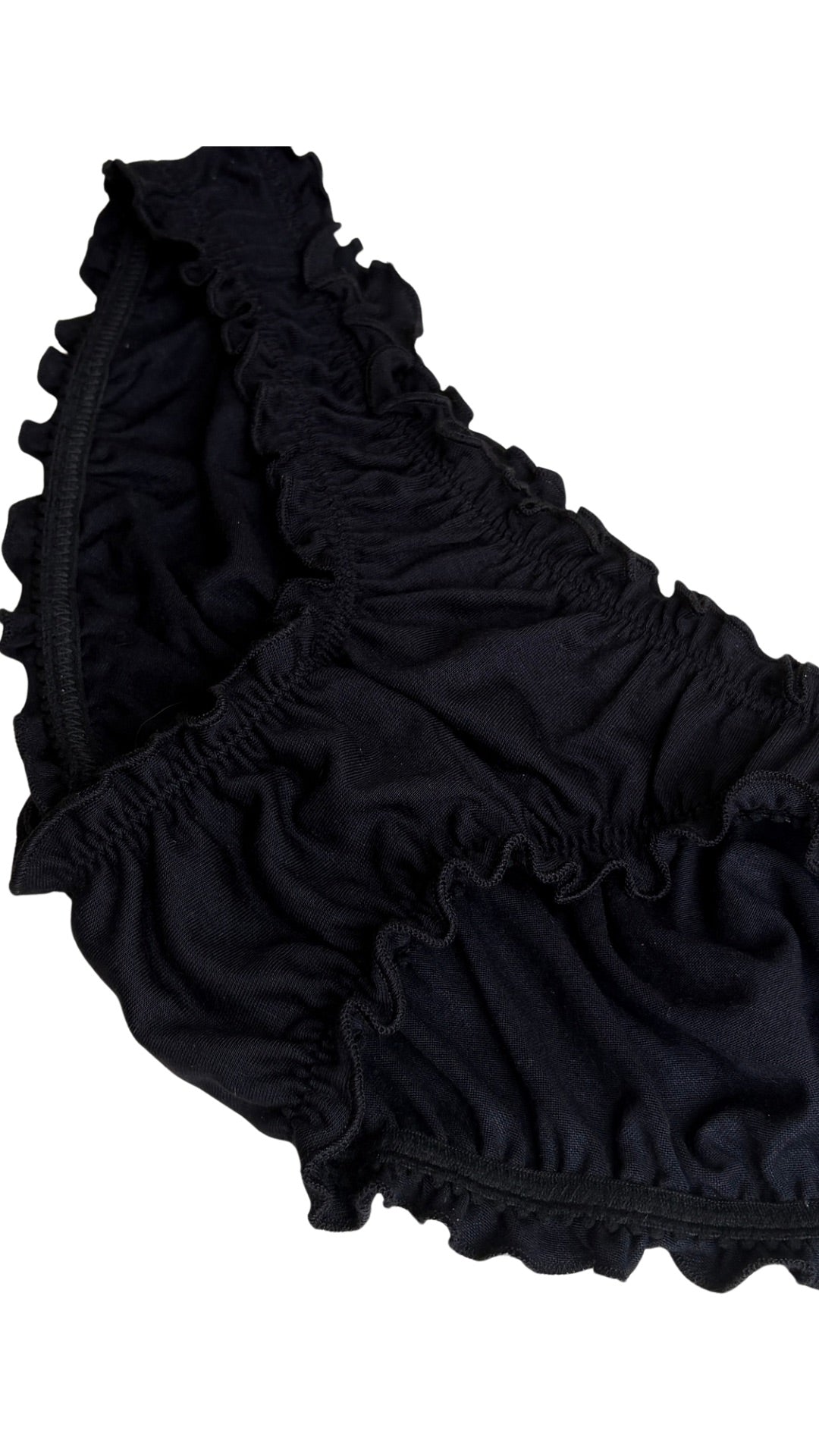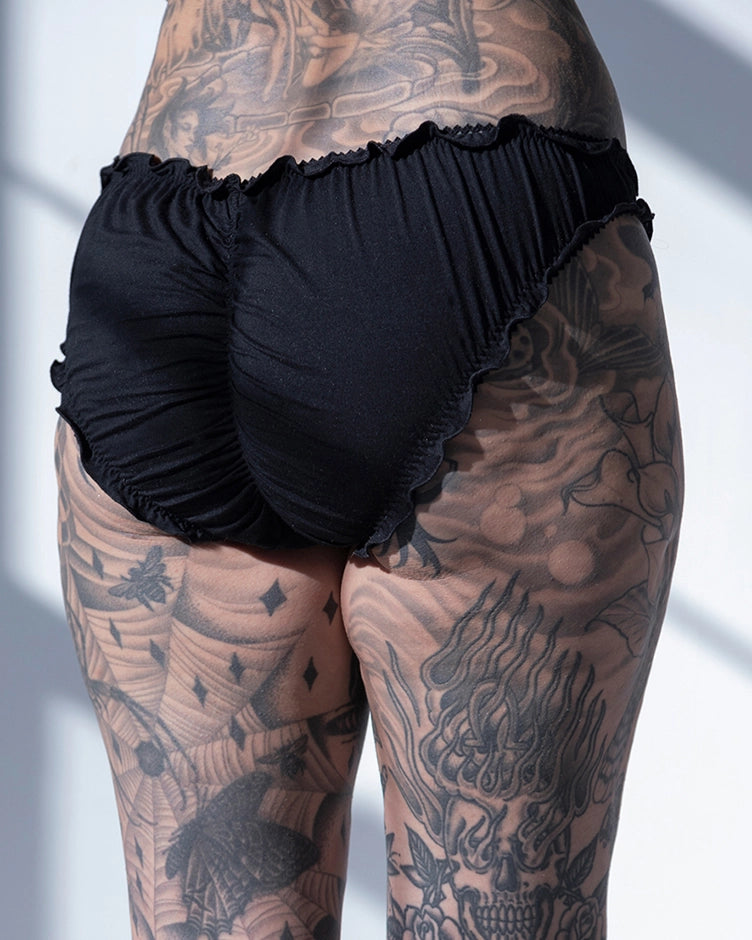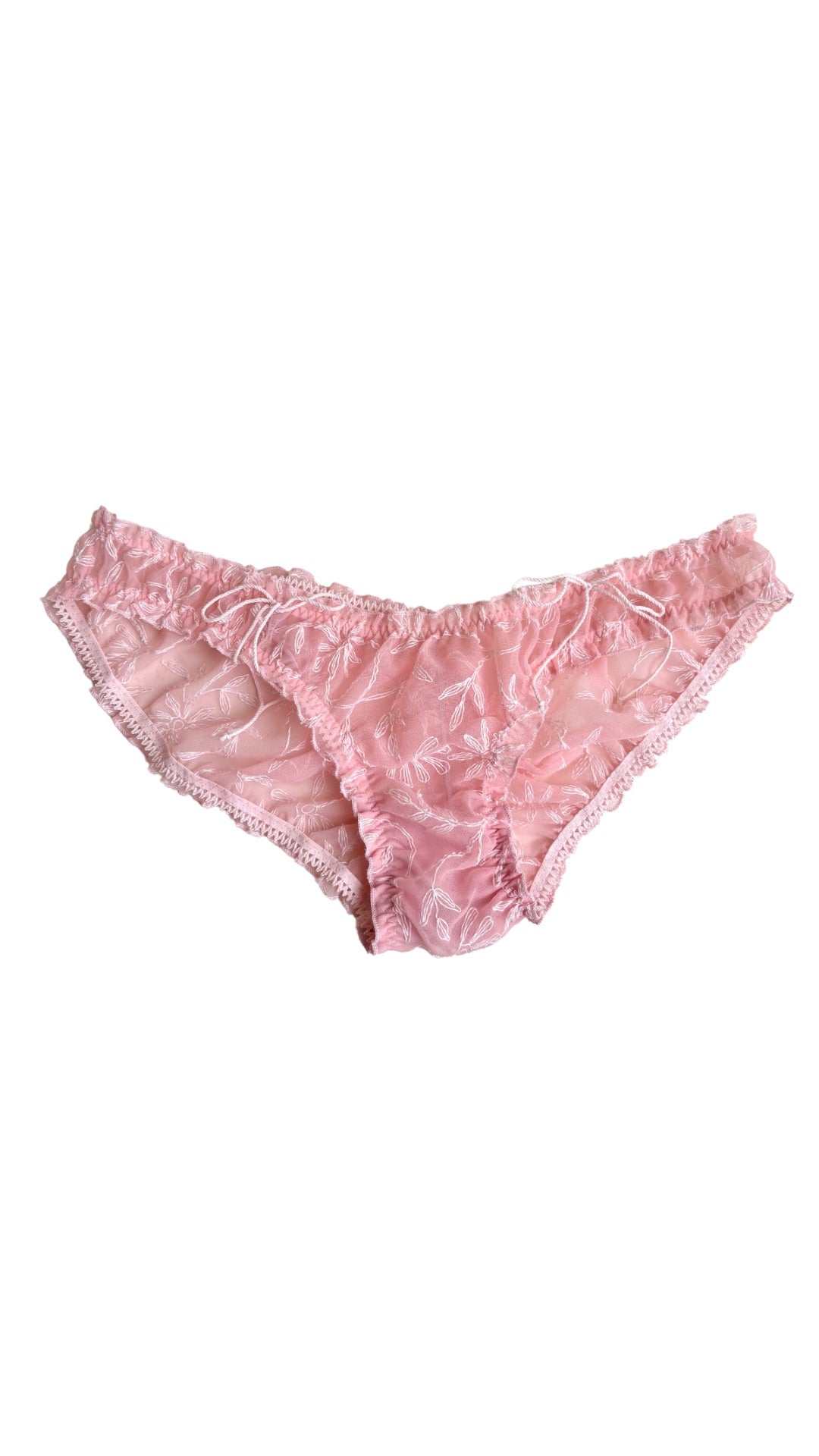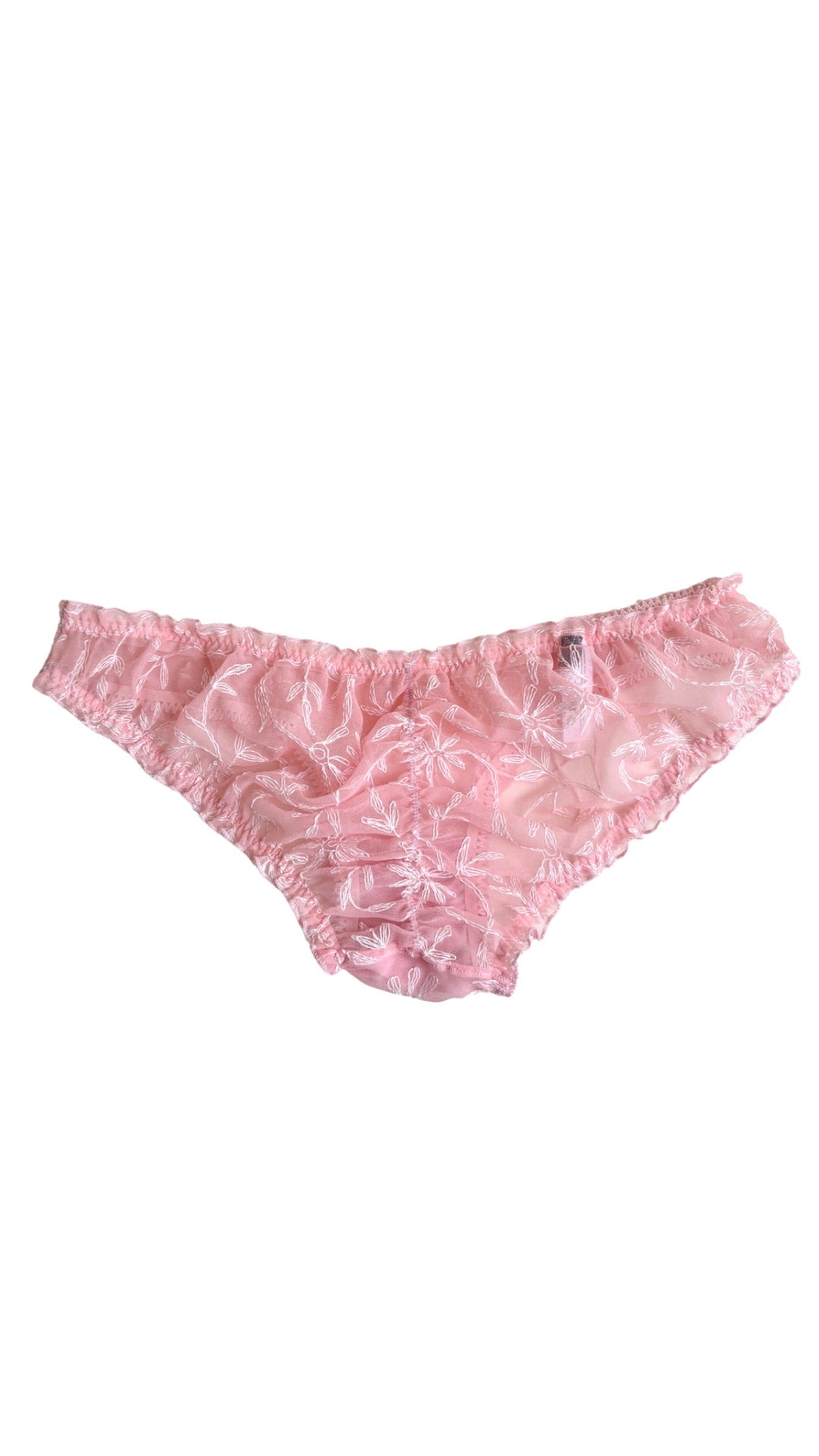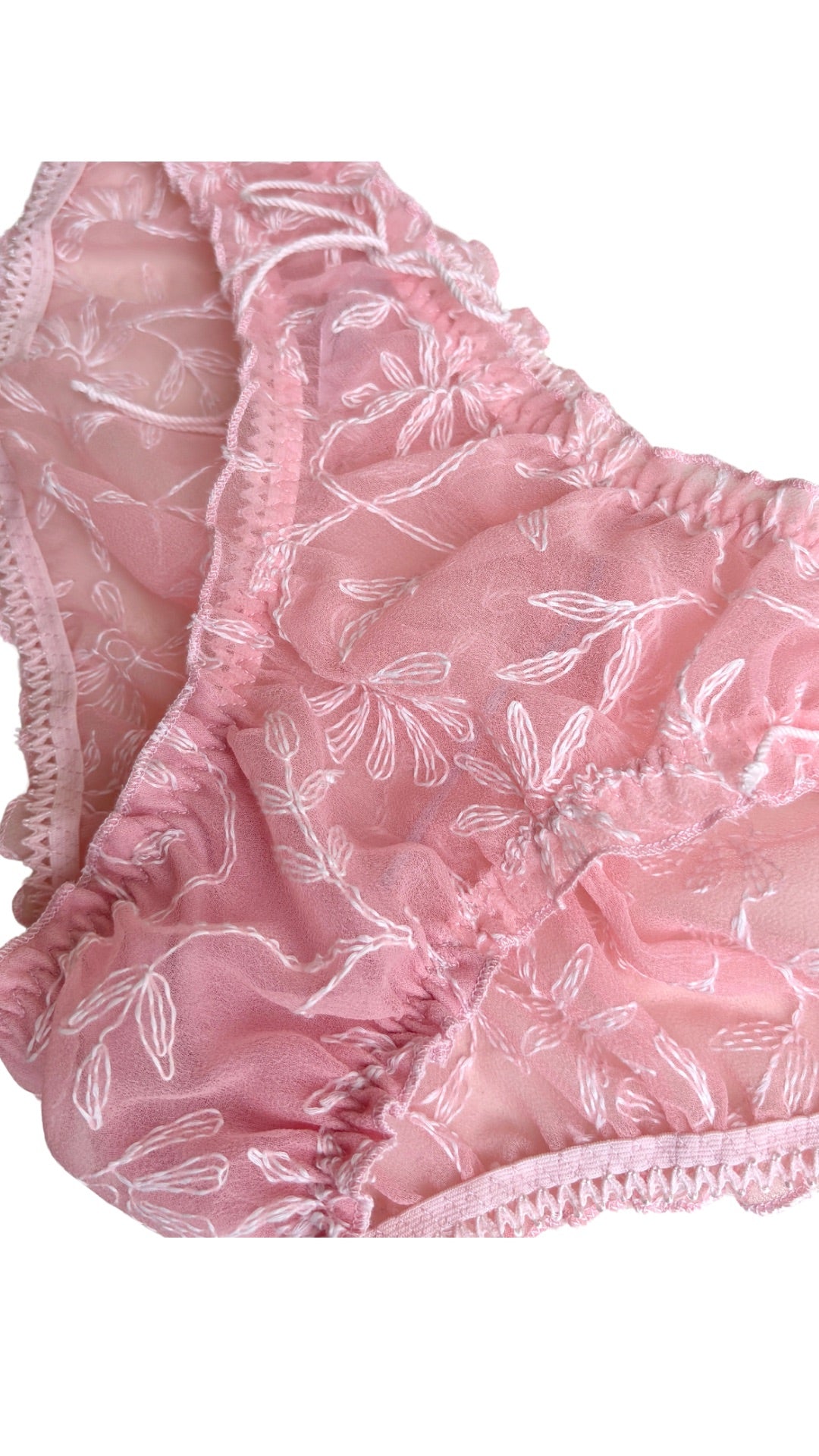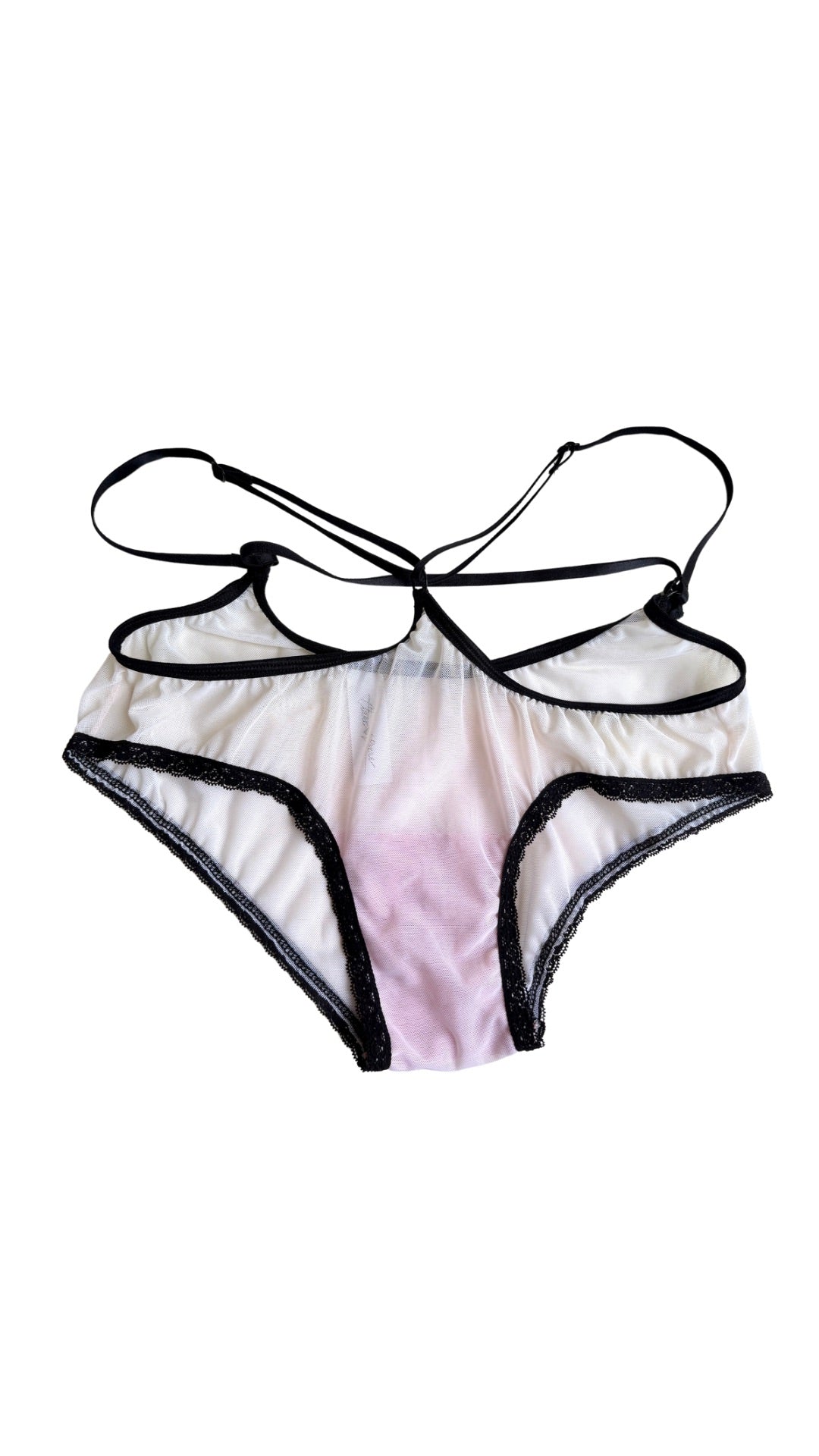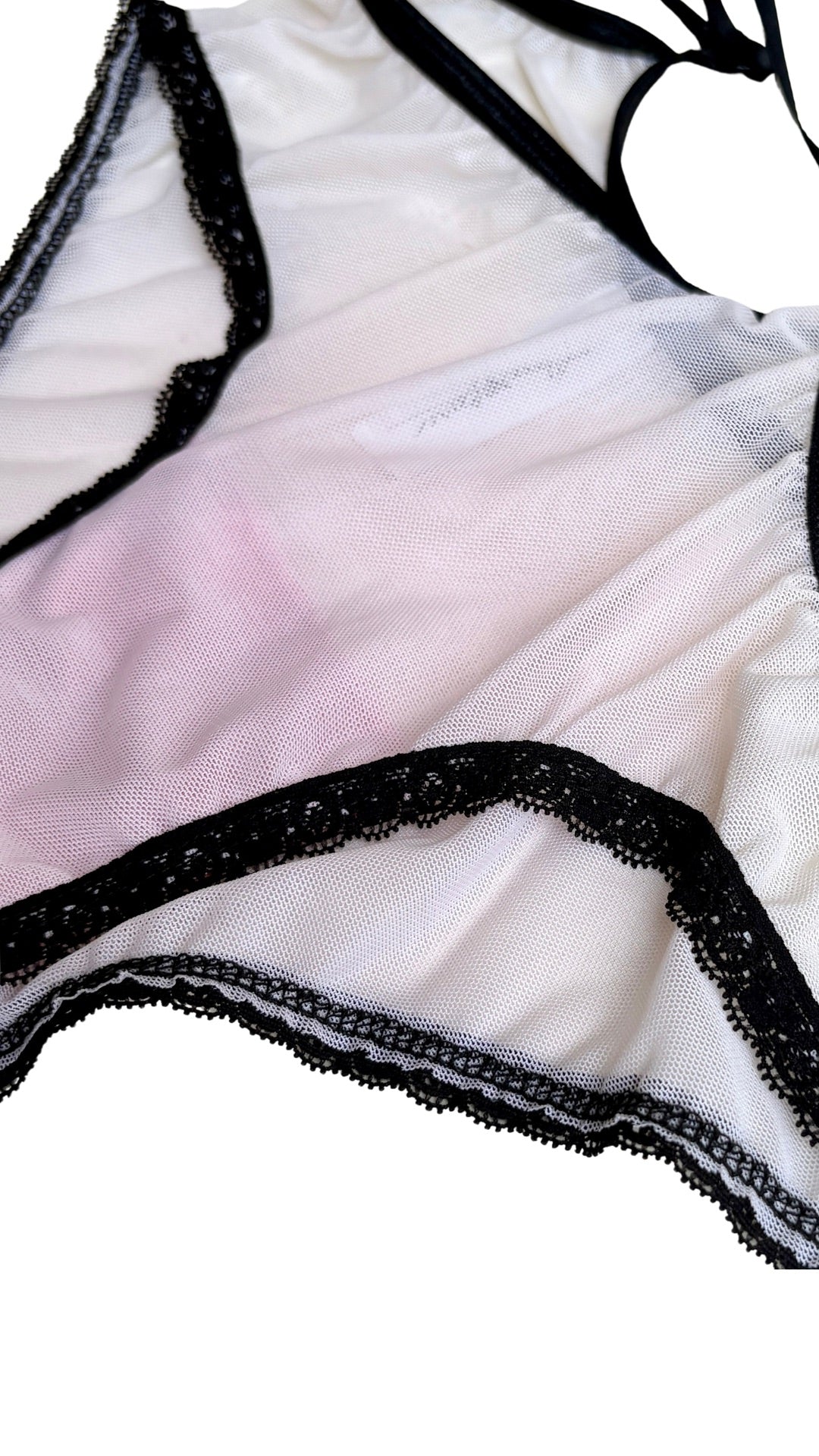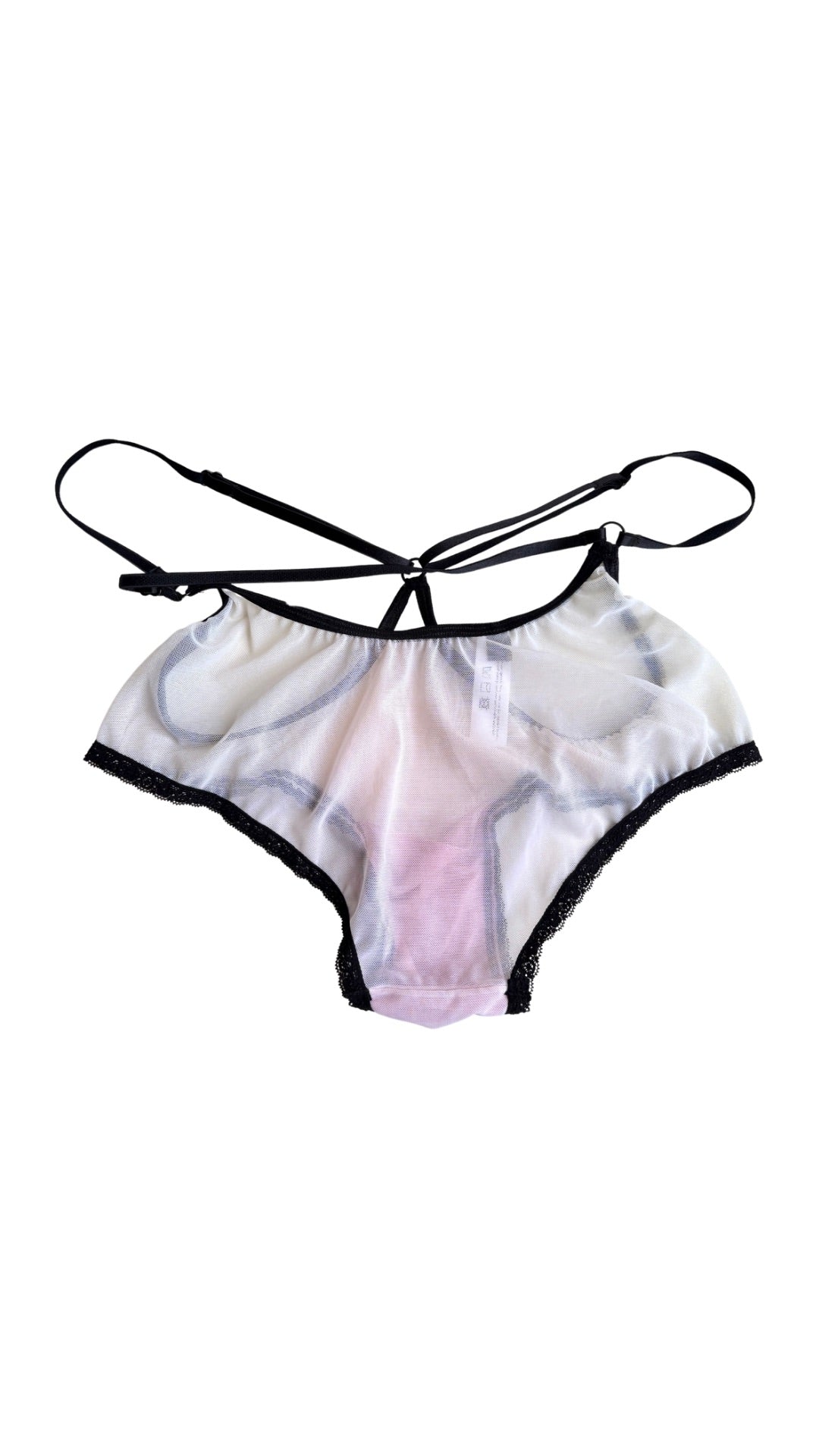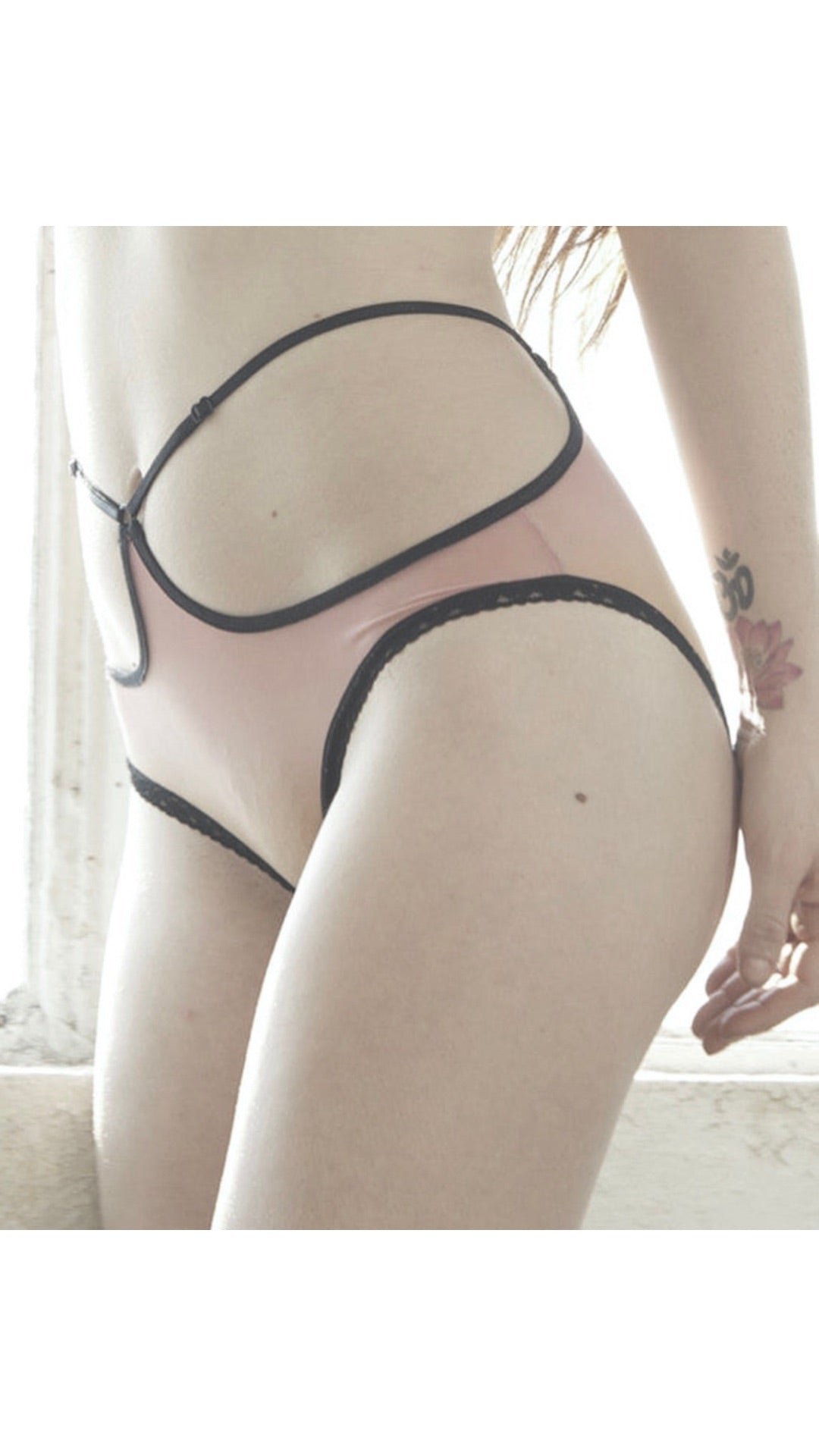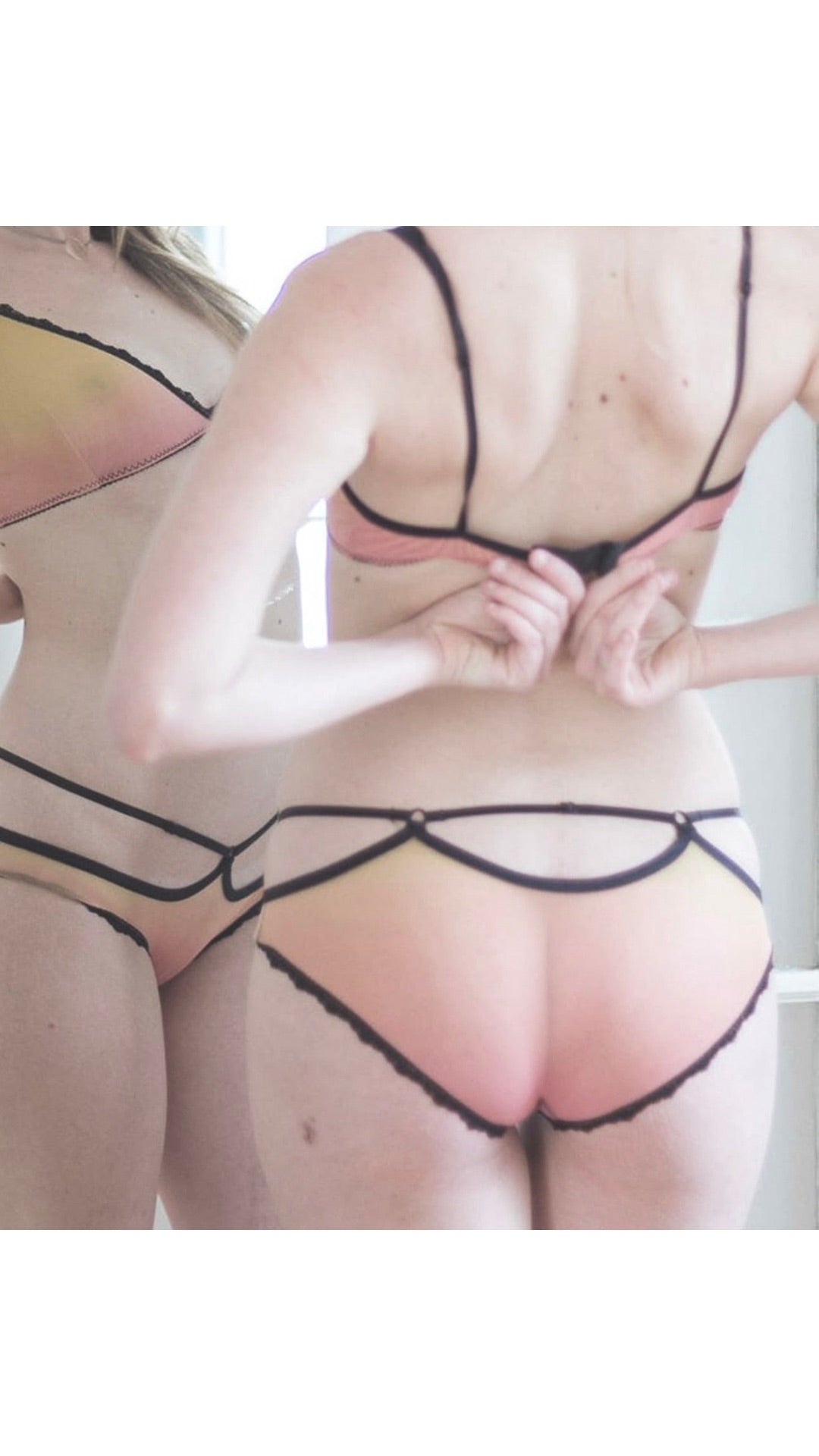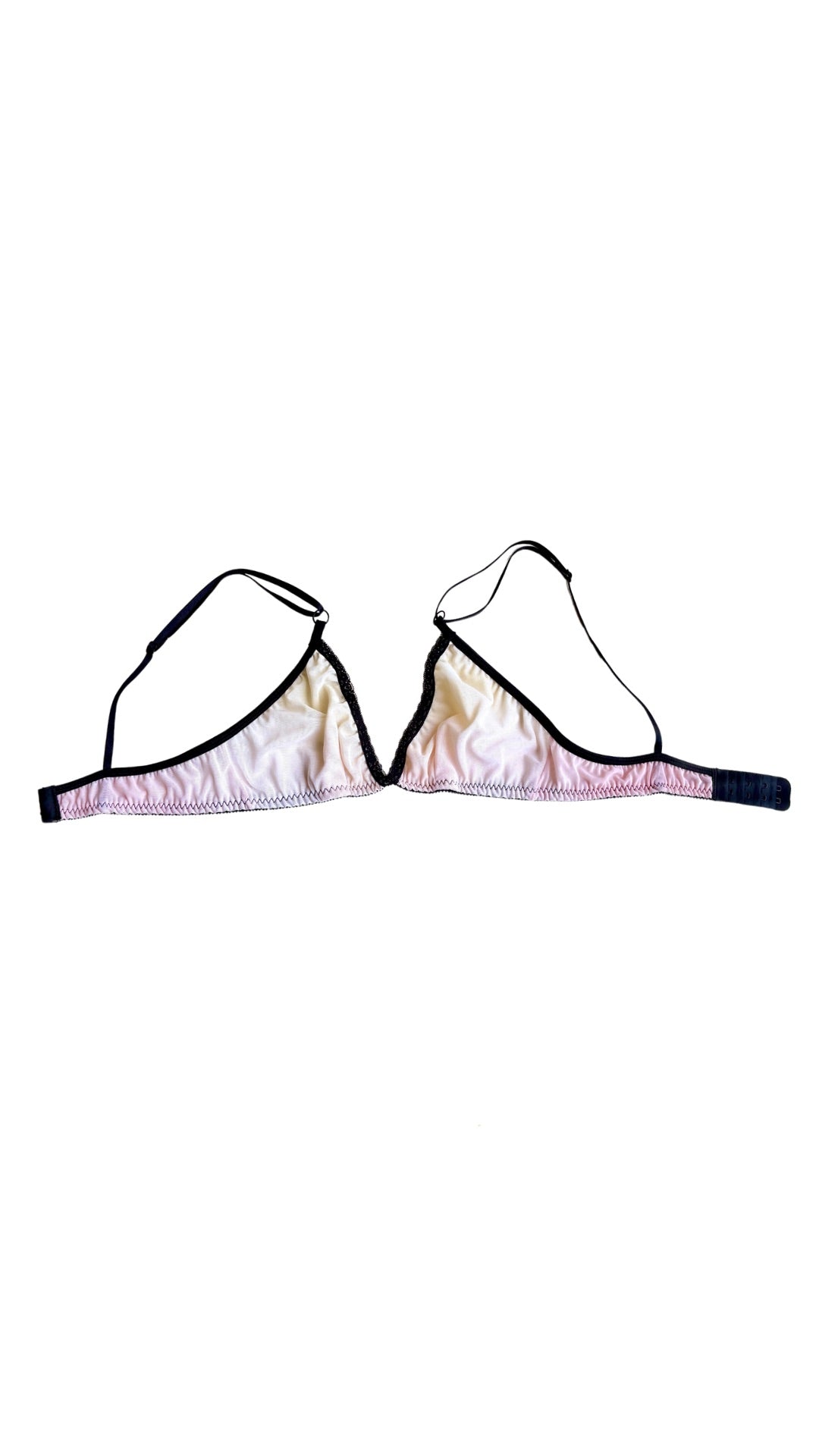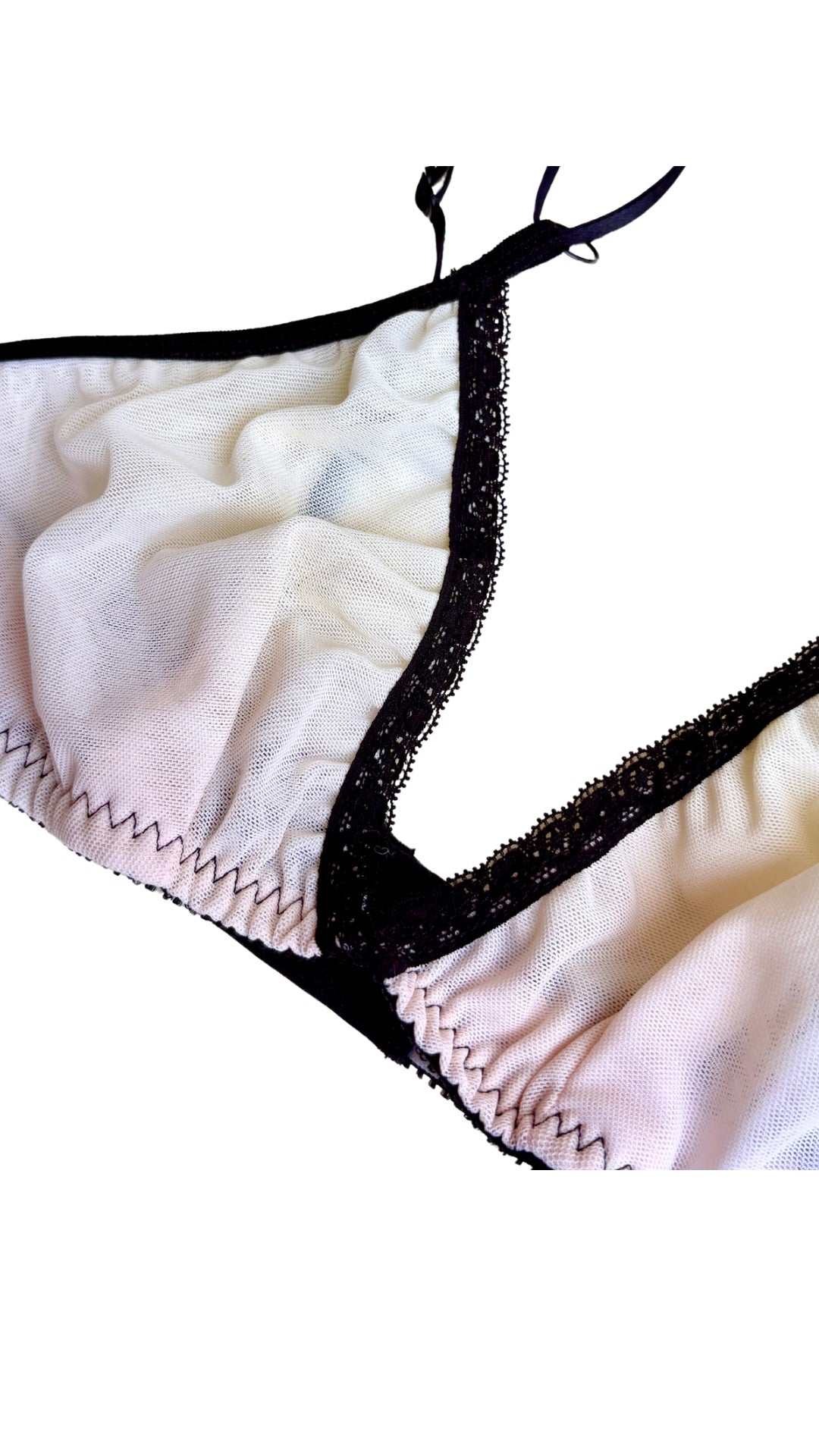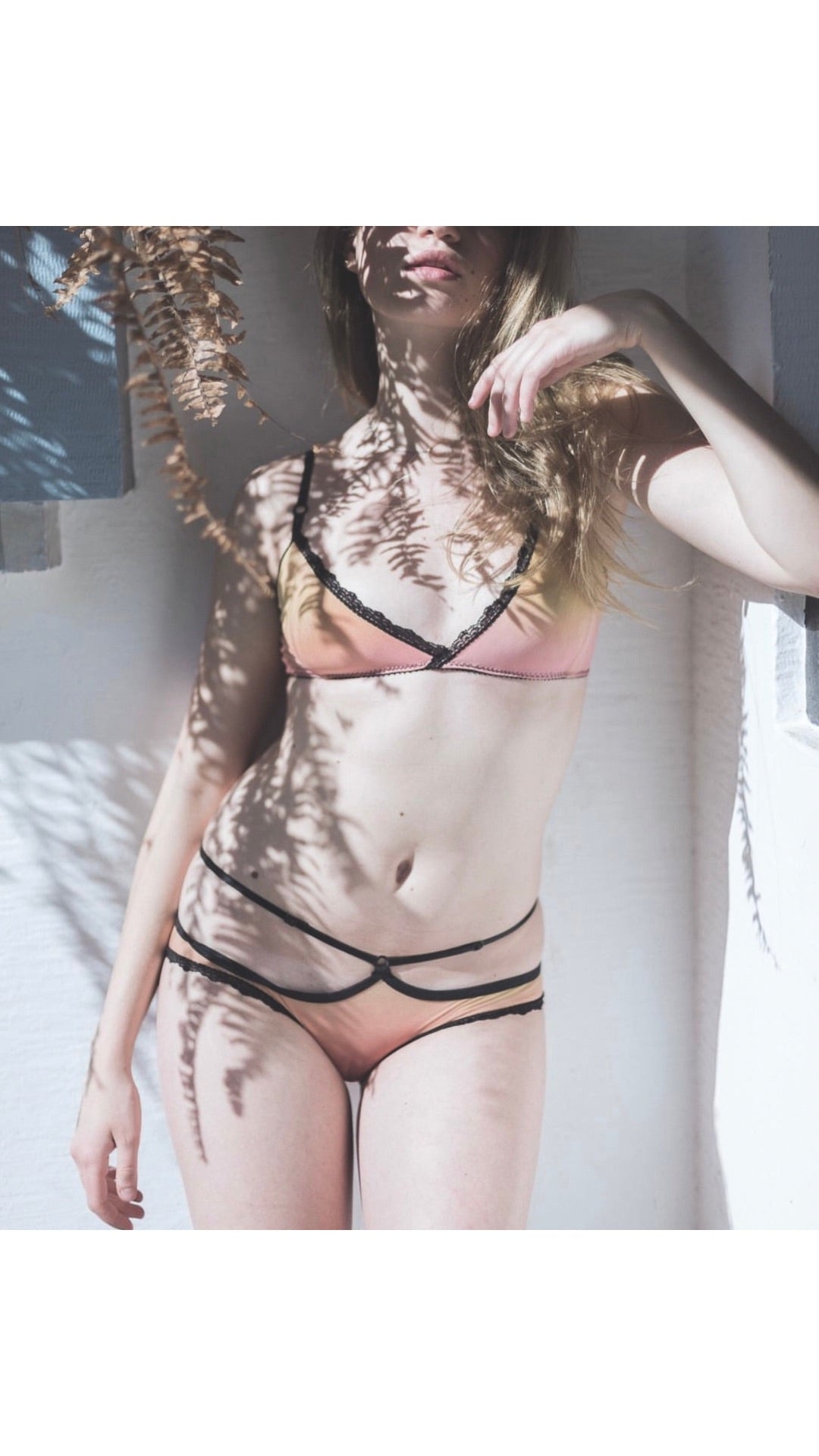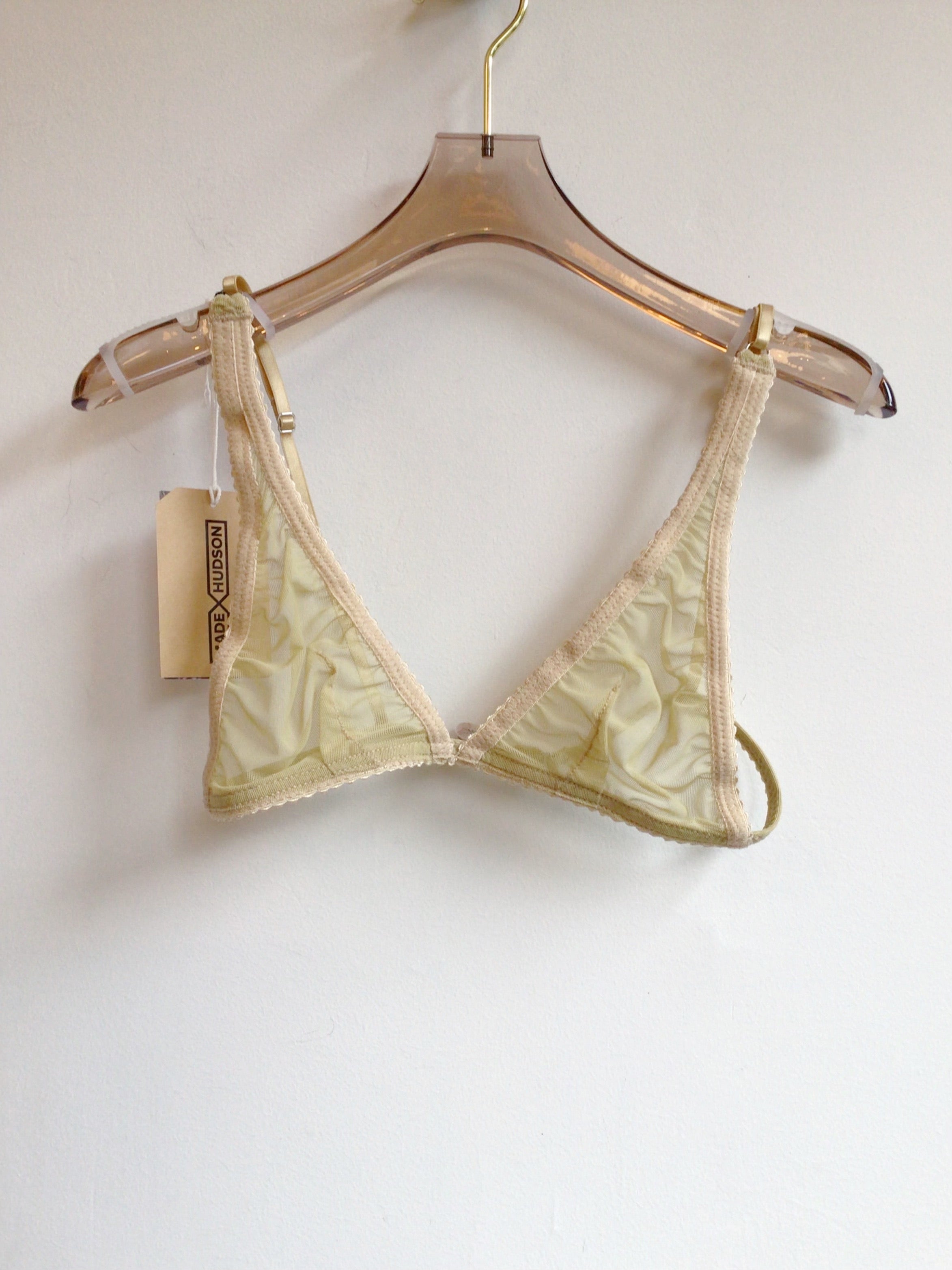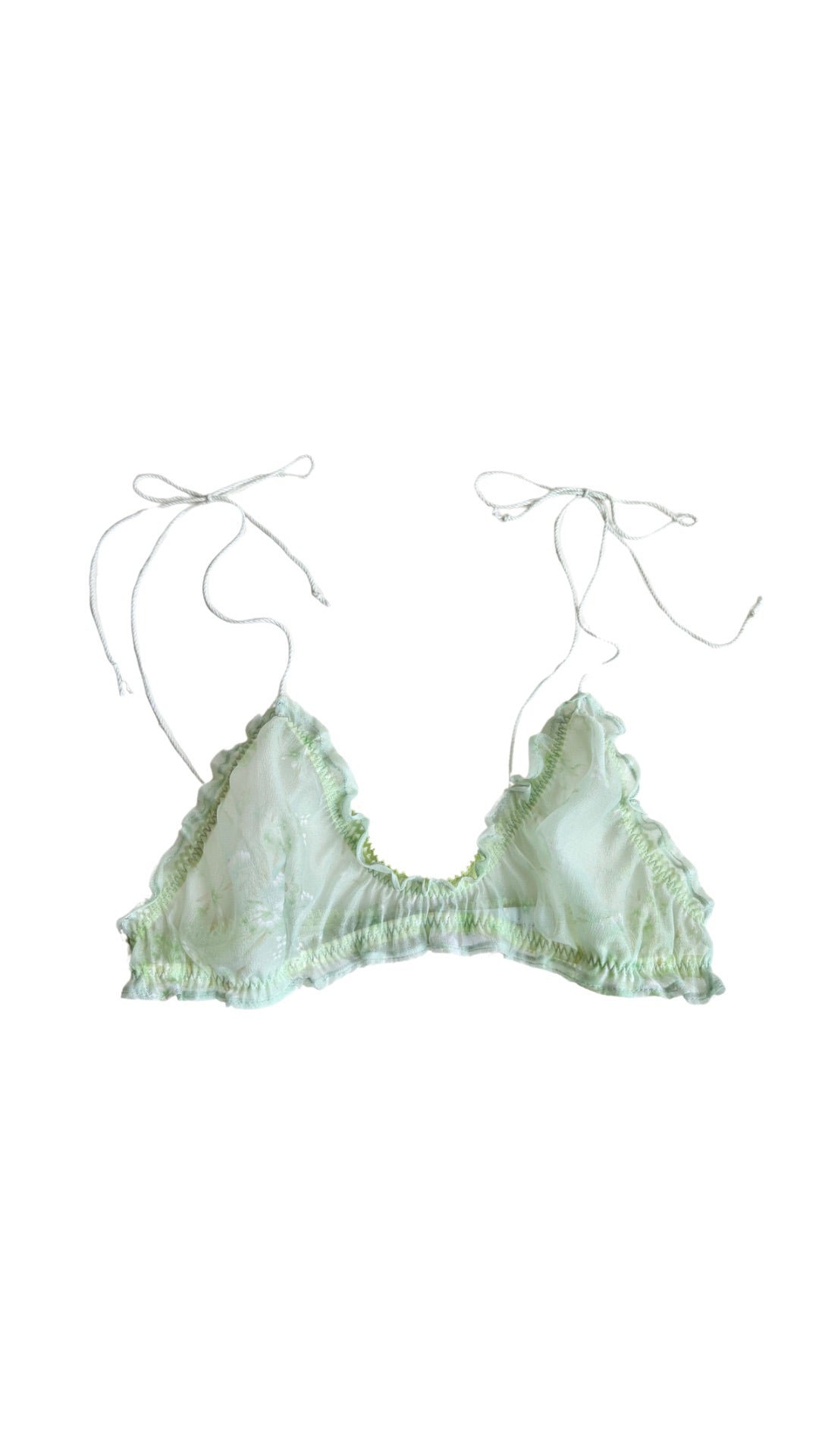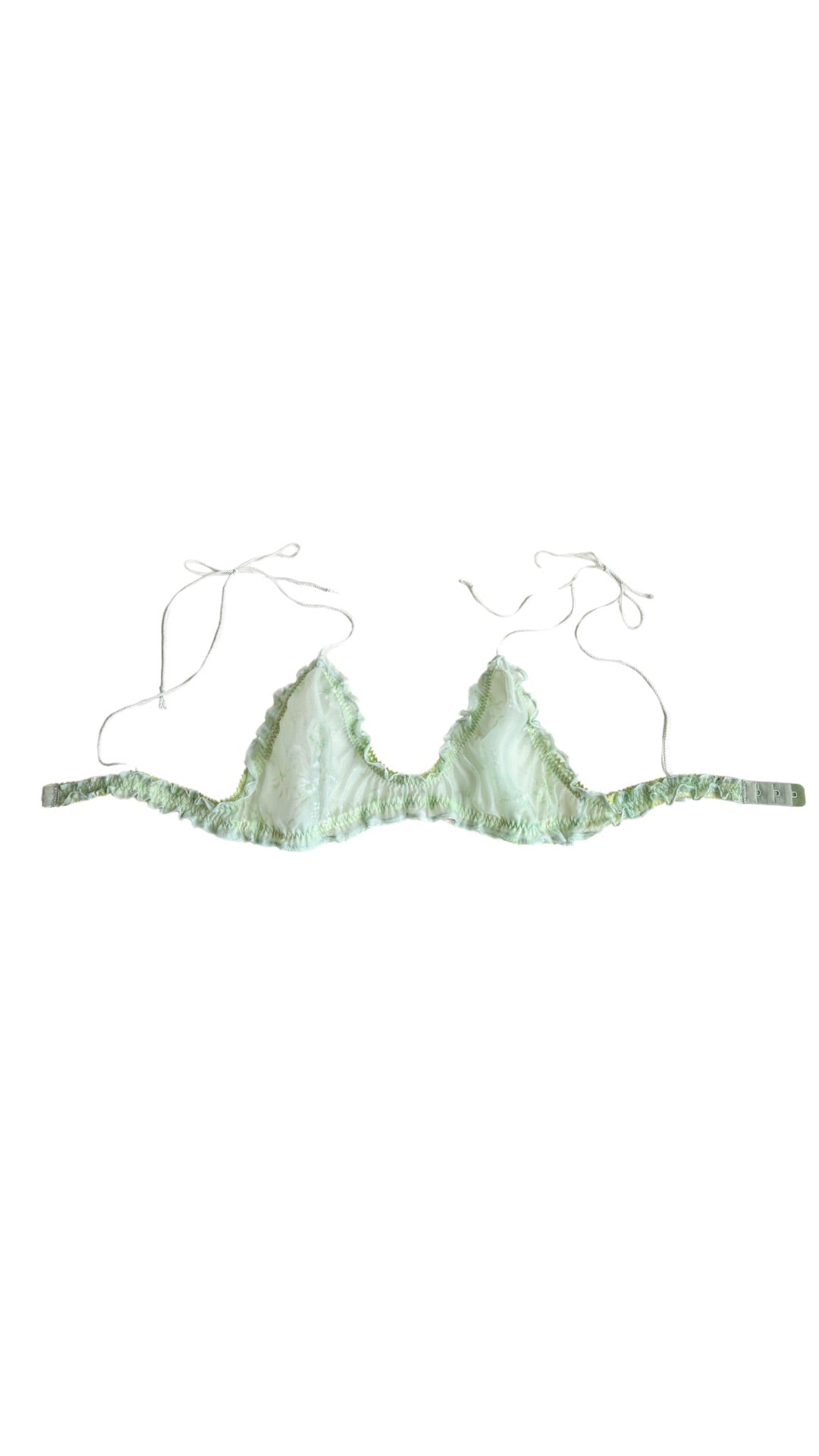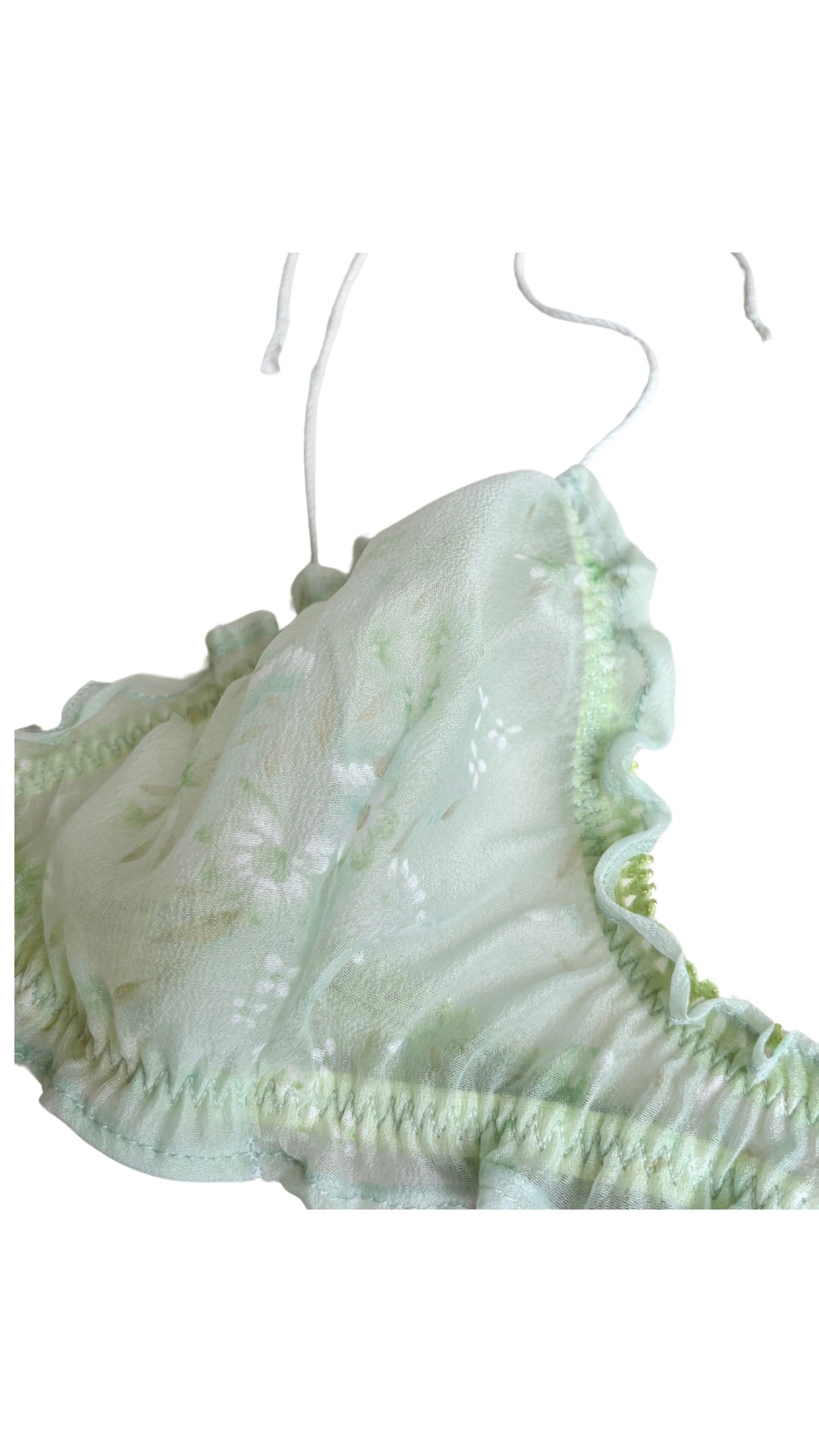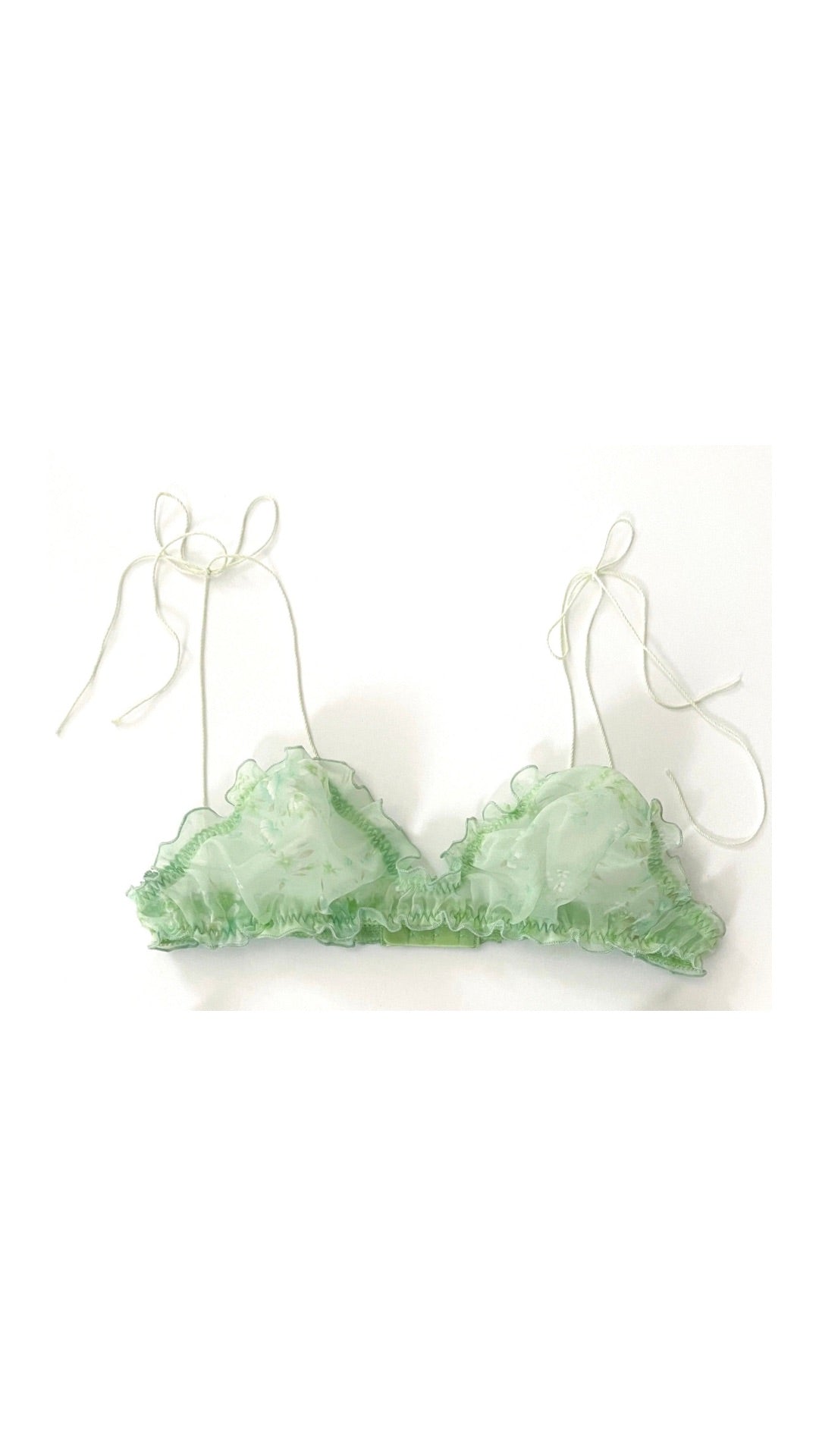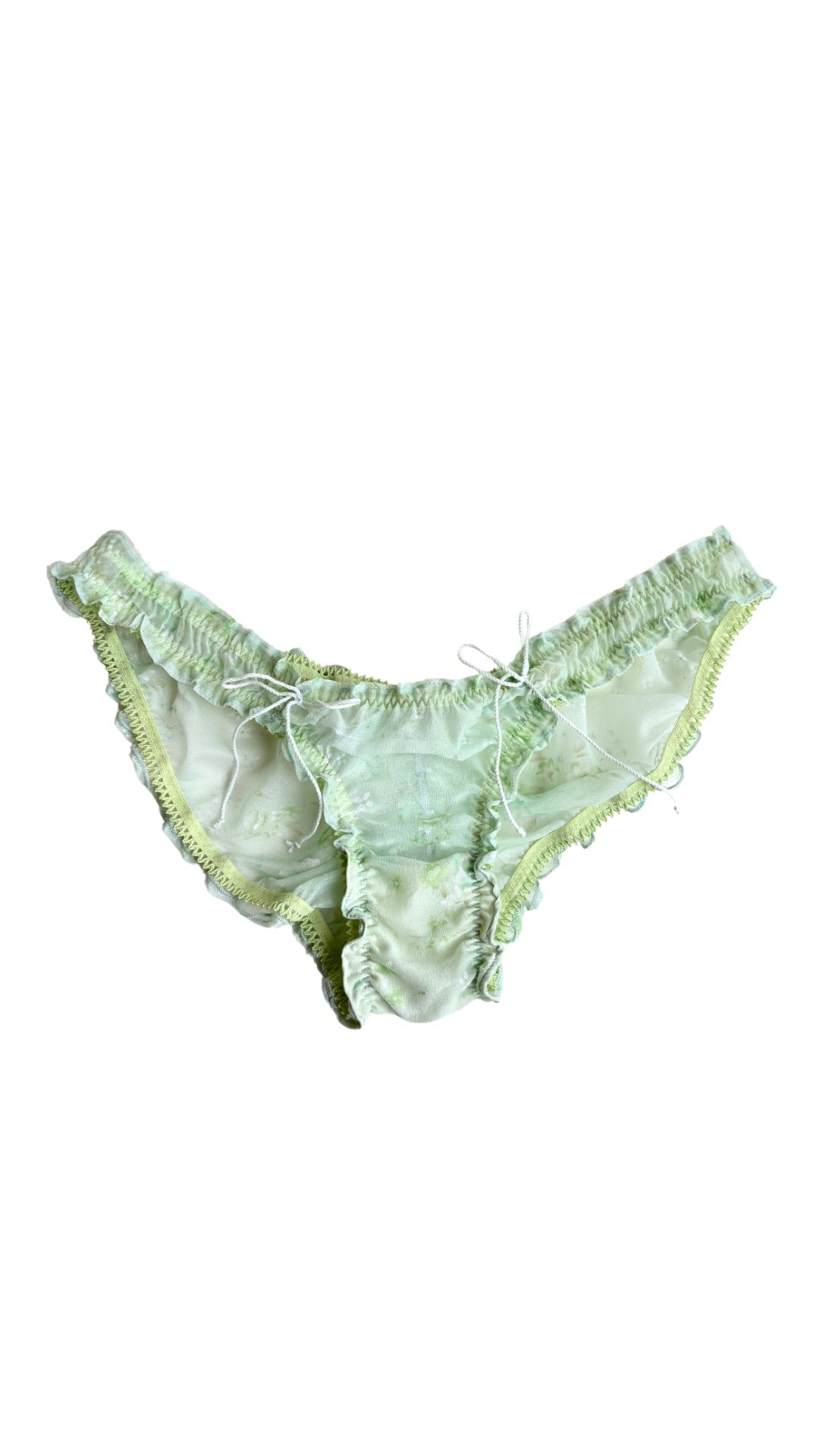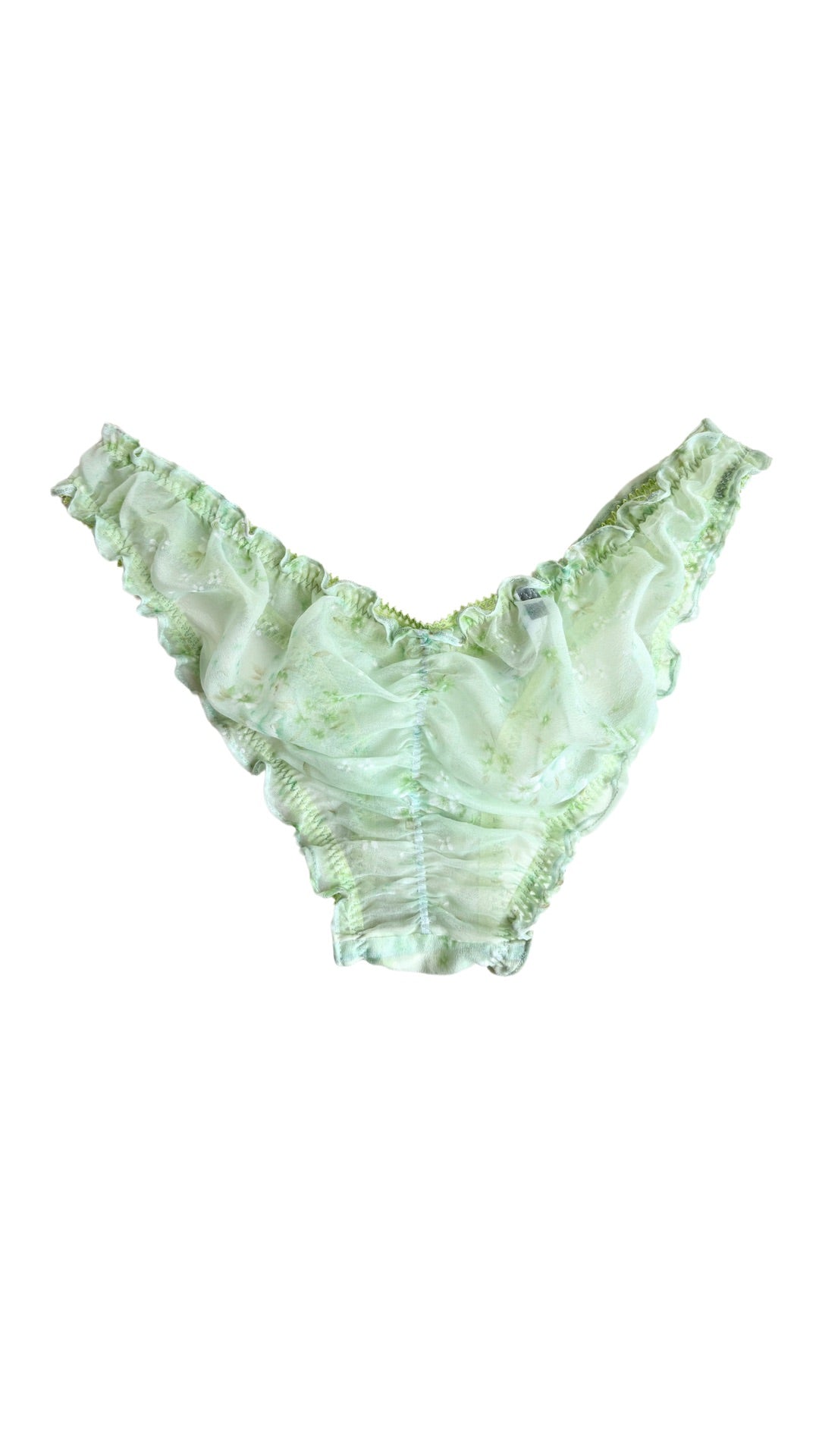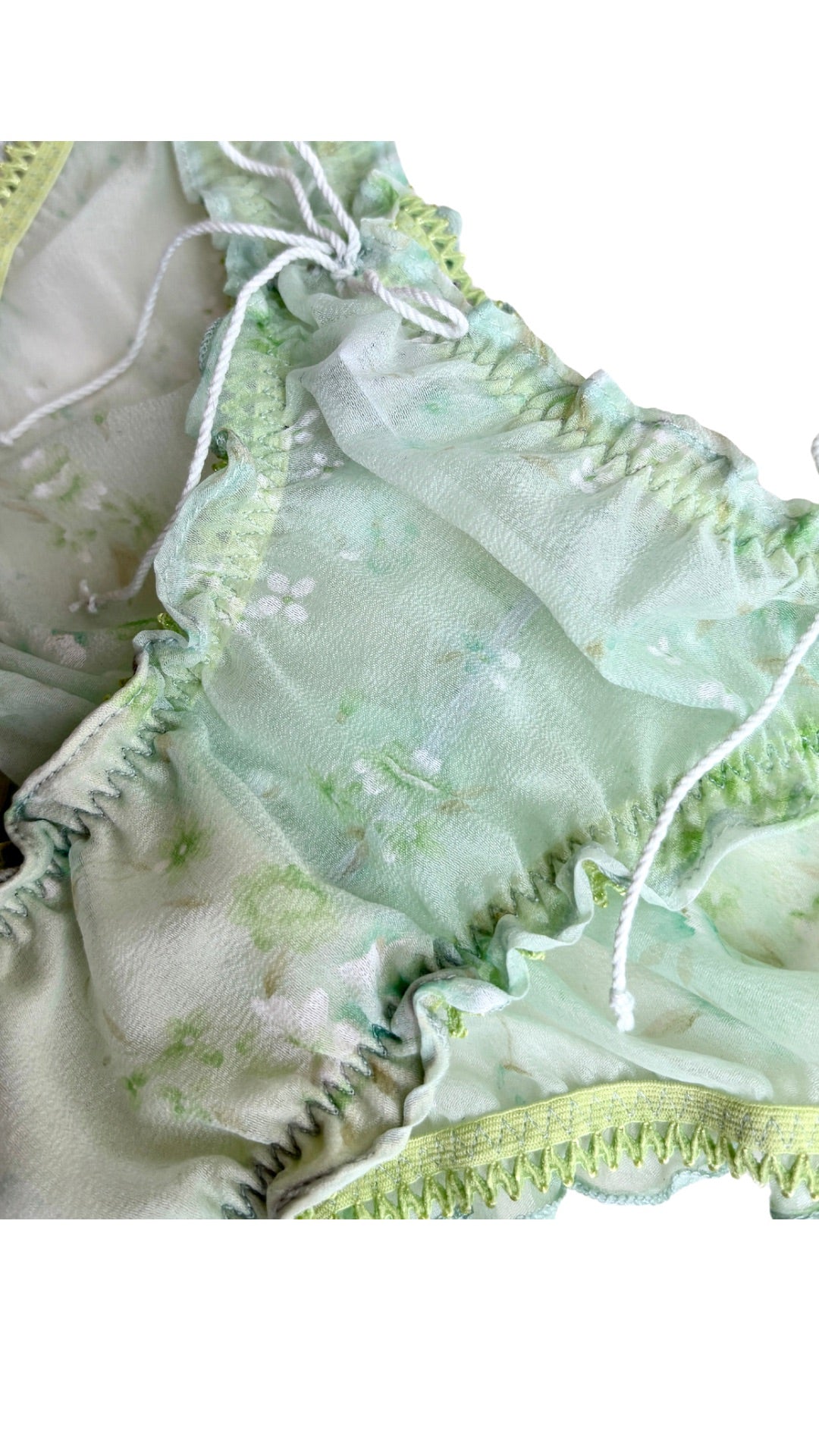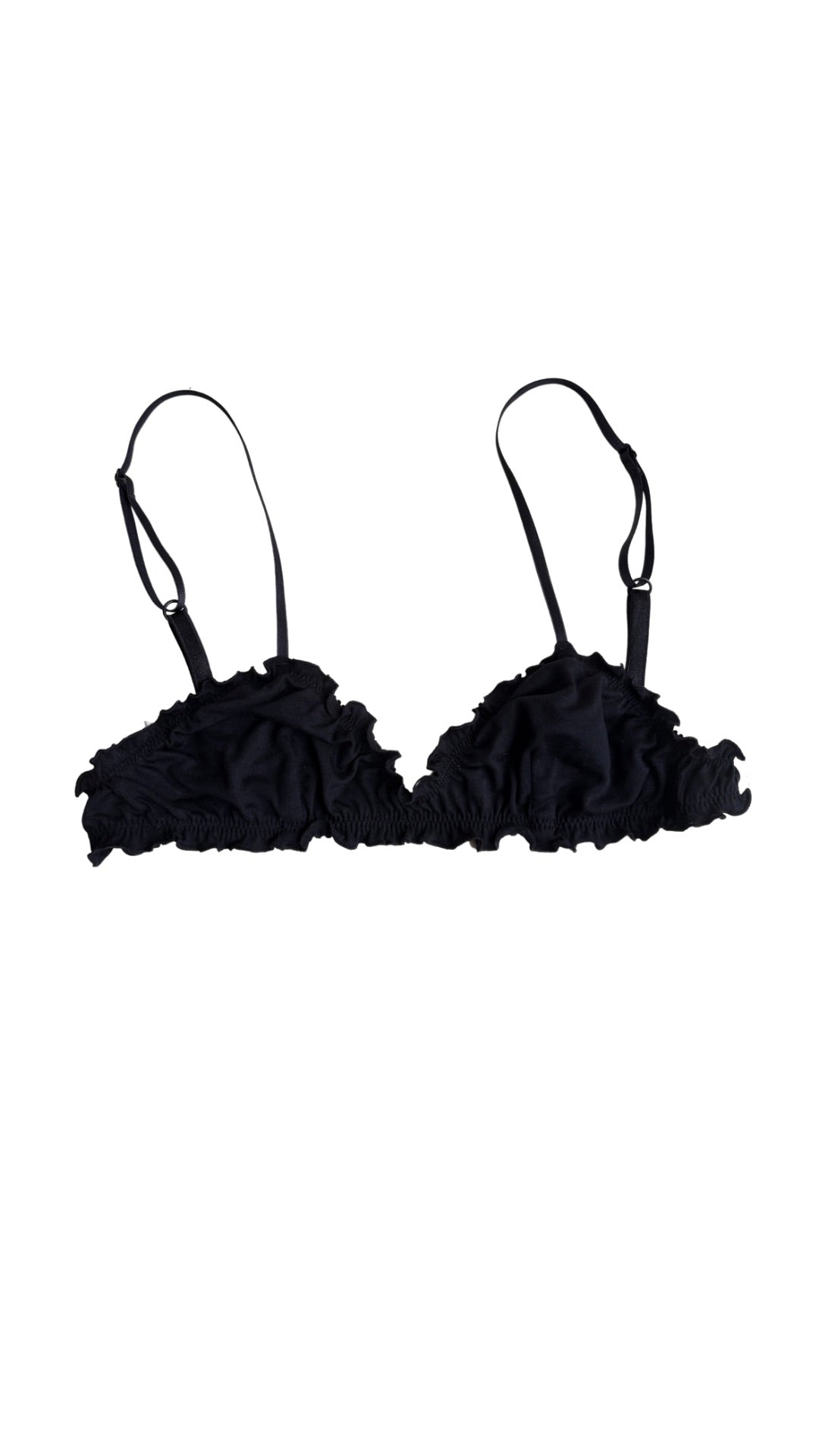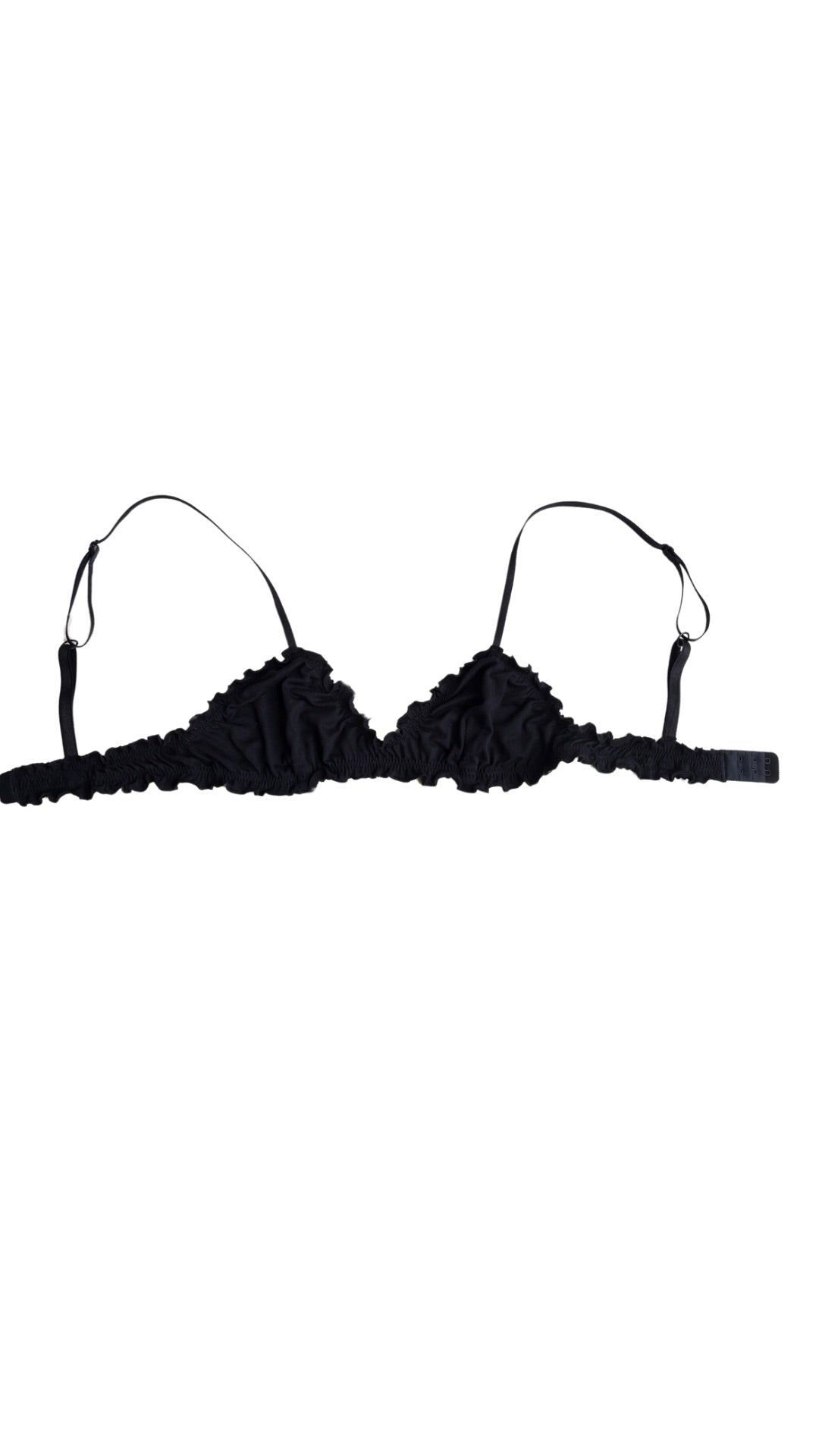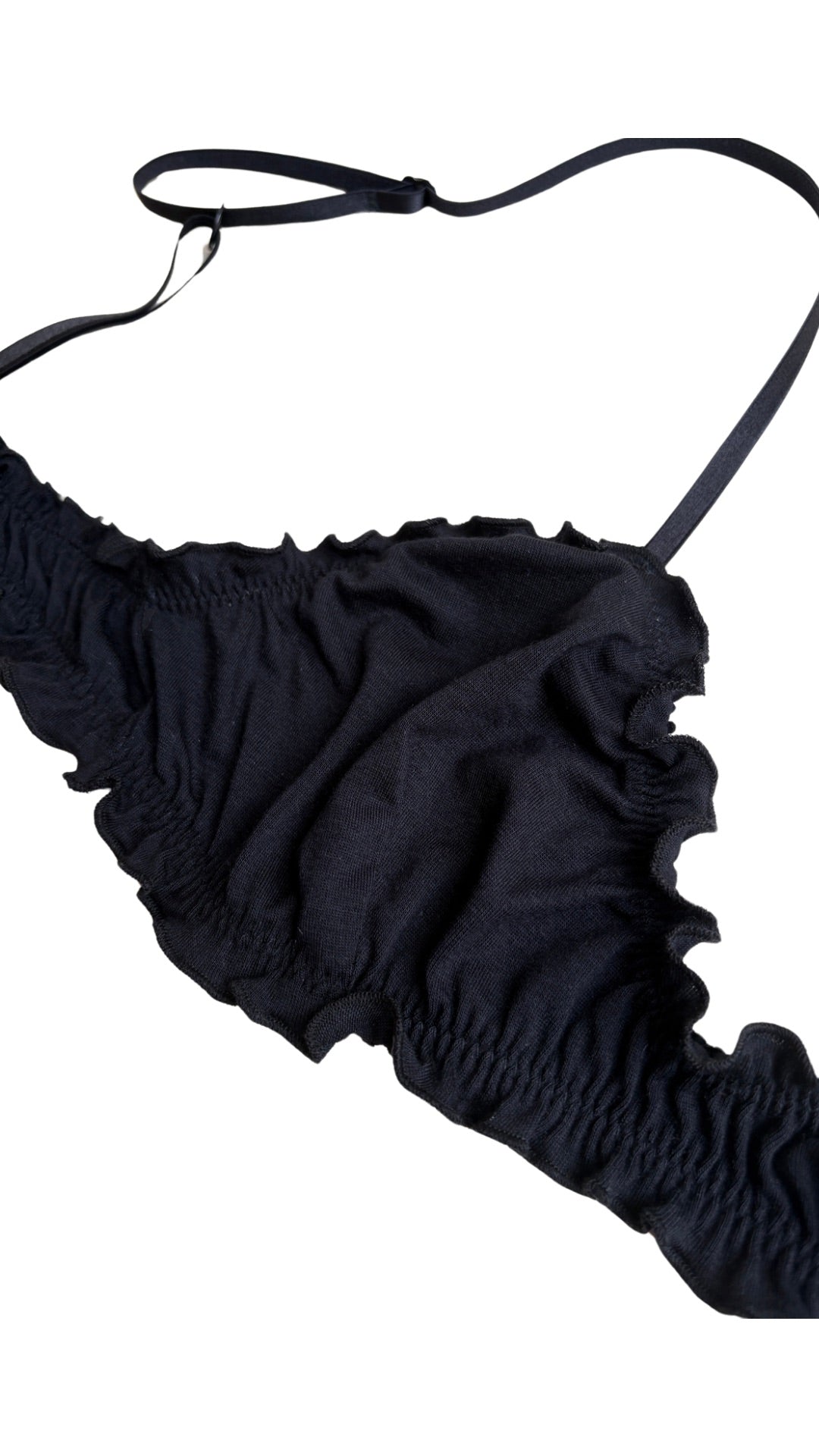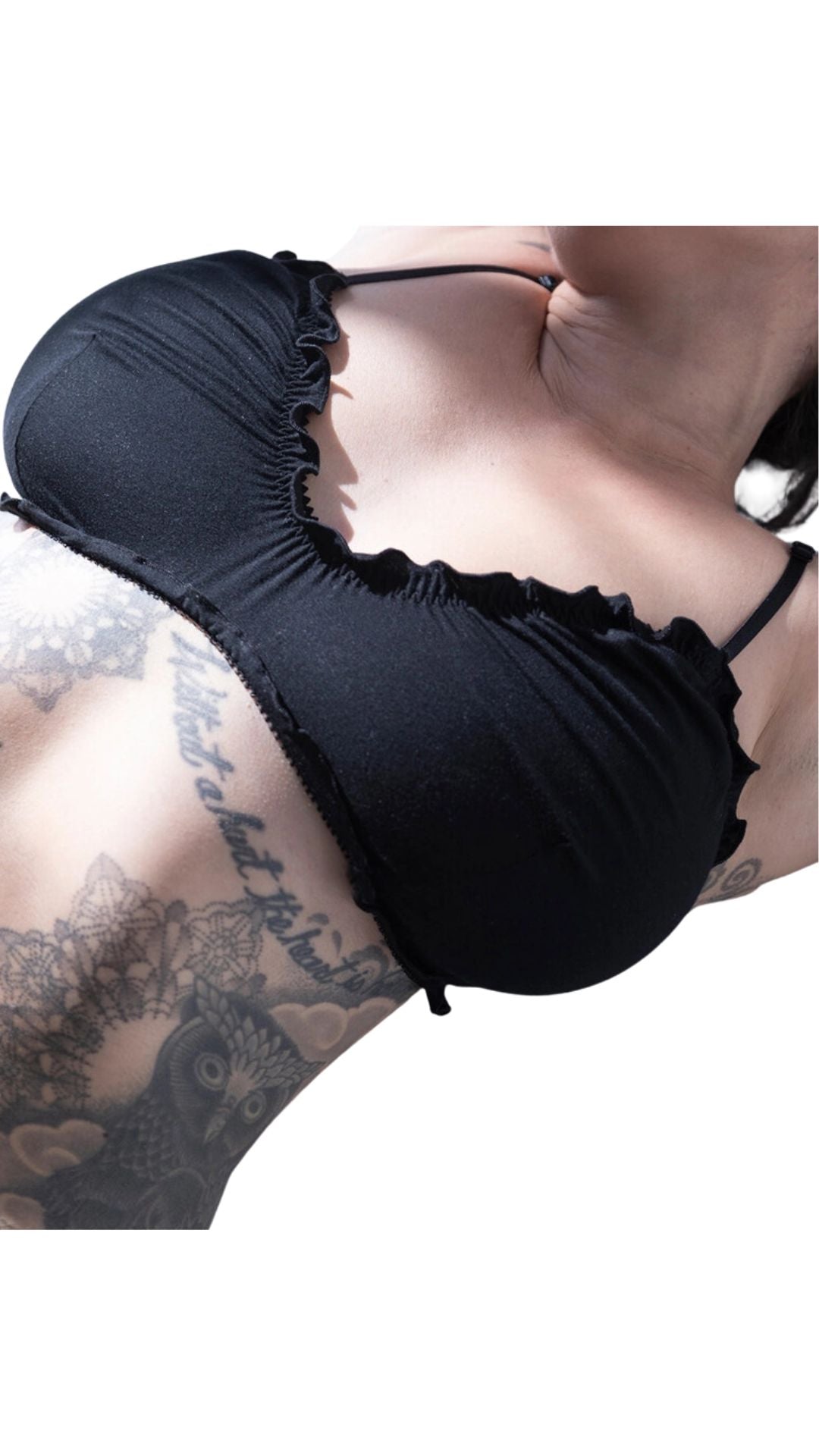SHORTLY AFTER we first opened our Catskill shop, we had a visit from Upstate New York lingerie designer Clare Herron. She came back for one of our clothing swaps and soon we were falling in love with her line and picking out pieces for the store — and Clare Bare has been part of our lineup ever since! So to kick off a series of interviews with some of the indie makers we represent in the shop — and with Valentine’s Day on the horizon — we’ve asked Clare a few questions about her background, brand and goals. And we hope you enjoy reading her answers as much as we did!
How and when did you decide to start Clare Bare, and how do you define the focus of it?
I’ve always had an obsession with lingerie, and it became a source of empowerment for me to create and sew my own pieces when I was a teenager. I have been upcycling since before there was even a term for it! It was later on in my printmaking class during my time at Parsons that the idea for Clare Bare was born. As I began experimenting with printing my own fabric, I was struggling to think of something I could sew that was small enough to fit within the constraints of the 23" x 31" silk screen that I was printing. My friend suggested that I sew lingerie and call it ‘Clare Bare’ as a clever play on words. In that moment my interests and skills coalesced into something that felt like it was meant to be.
I have been doing this a long time now and it has evolved over the years, but my design ethos has always remained the same. These values help define my focus:
- I primarily use vintage and deadstock fabrics, rotating different versions of my core styles.
- I design when I feel inspired (and not on a market schedule).
- New materials that I use are limited and produced as sustainably as possible.
- My suppliers are part of my local economy that I support.
- I shoot with all kinds of people, both professional and non-professional models. (Lingerie is for everybody.)
- The relationships I have with my assistants are mutually beneficial. I come from a teaching artist background and I love to mentor people with similar interests.
Do you make everything yourself?
Currently I make most pieces myself and hire help seasonally when it’s busy. Through my trial and error with manufacturers, I’ve found it’s easier to do production in-house. When other seamstresses are involved I can train them with machine settings and the delicate handling of fabrics and elastics so much better in person. Pre- and post-production, such as cutting or trimming, are usually the tasks that I hand off to other people, though I love doing all the steps involved and find so much satisfaction in working with my hands.
What led you to want to use deadstock fabrics?
When I first started my brand I used primarily very limited editions of vintage fabrics, but as my brand grew and I began doing wholesale orders I had to find a way to produce a larger quantity of styles in a specific fabric. My brand grew a lot when I was based in the Fashion District of Los Angeles — a place where so much manufacturing happens and it’s easy to source surplus and deadstock materials from other brands’ production runs. Over the years I have formed good relationships with suppliers and even other brands that know what I’m looking for in fabrics. Sometimes they will contact me with swatches that I might be interested in. Oftentimes I’ll take a roll of Tencel or Modal jersey that has a continuous defect from production (like a hole every yard or two.) Luckily my pieces are small and I can cut around these things, saving this roll of fabric from the landfill.

What brought you to the Hudson Valley?
I lived in NYC for 10 years, then Los Angeles for 10 years. I always thought I’d end up in the Hudson Valley someday since my parents and brother live here, and my sister is in the city. Not being able to be close to my family on the east coast was difficult during Covid lockdowns. As great as things were going in LA business-wise at that time, it felt like it was time for a change and time to explore options for the future. I’m still exploring (and I still live part time in Los Angeles) but I spend most of my time here.
What’s the hardest thing about what you’re trying to do?
The hardest thing I’m trying to do is actualize all the creative ideas that I have. I feel a sense of pressure to create more now than I ever have and express myself in other mediums beyond my brand. I generally have about 30 open orders in my queue at all times and it’s a lot to keep up with. I’m an artist at heart, and I still have so much I want to accomplish in this life. I always joke I wish there were five more hours in each day. I think all creative people feel this way.
What brings you the most excitement or sense of achievement?
Receiving love notes and seeing repeat customers’ names pop up on my orders year after year is the most rewarding thing. Beyond that, I find so much satisfaction in simple things like sewing a bunch of pieces and seeing them all in stacks when they’re finished.
What do you wish more folks knew about your brand?
I wish more people knew what the day to day process looks like. I find so much joy in what I do, especially when I’m working with other people — the occasional banter and chatting about creative ideas is what gives me life. I think for years on social media we were all more focused on branding and the presentation of the finished work than the process of creating. It takes time, and honestly I’d rather be working with my hands than on a screen, but it is so important and it’s what I find most interesting in other people’s work as well. It’s something I want to focus more on sharing — what it really looks like behind the scenes.
What’s something you’ve learned about yourself and/or the business along the way, and where do you see Clare Bare going — what's next for you and the brand?
I think the biggest thing I’ve learned is how to adapt. I have been creating Clare Bare since 2008, and so much has changed during that time. In the beginning, the only way to be discovered was through trade shows, then social media quickly changed everything. Direct to consumer online became the way to go for awhile, but now things have come full circle and we’re seeing a resurgence of retail in a post-Covid world. When I first started my brand, I naively thought that it would just be a steady upward trajectory, but so many unpredictable things have happened in recent years and I’m just grateful I’ve been able to creatively navigate through it. I would have never guessed that my most successful years in business would be during a global pandemic, immediately followed by my slowest year. It did give me some time to think clearly and recalibrate though, and also open up my own retail store!
Moving forward I would love to focus on creating more higher-end, one-of-a-kind and upcycled pieces, as well as some conceptual bodies of work that are more art focused but still adjacent to my brand’s work. I had a stained glass piece in a show at the ArtPort in Kingston last month — an abstract bra-inspired piece on a hanger. I would love to experiment more, and connect more with creative community.
Thanks so much, Clare!
Scroll down or click to here to shop our current inventory of Clare Bare lingerie.
See also:
• What is deadstock fabric?
• What is slow fashion?
[Top three photos courtesy of Clare Herron; bottom photo © Made X Hudson]














